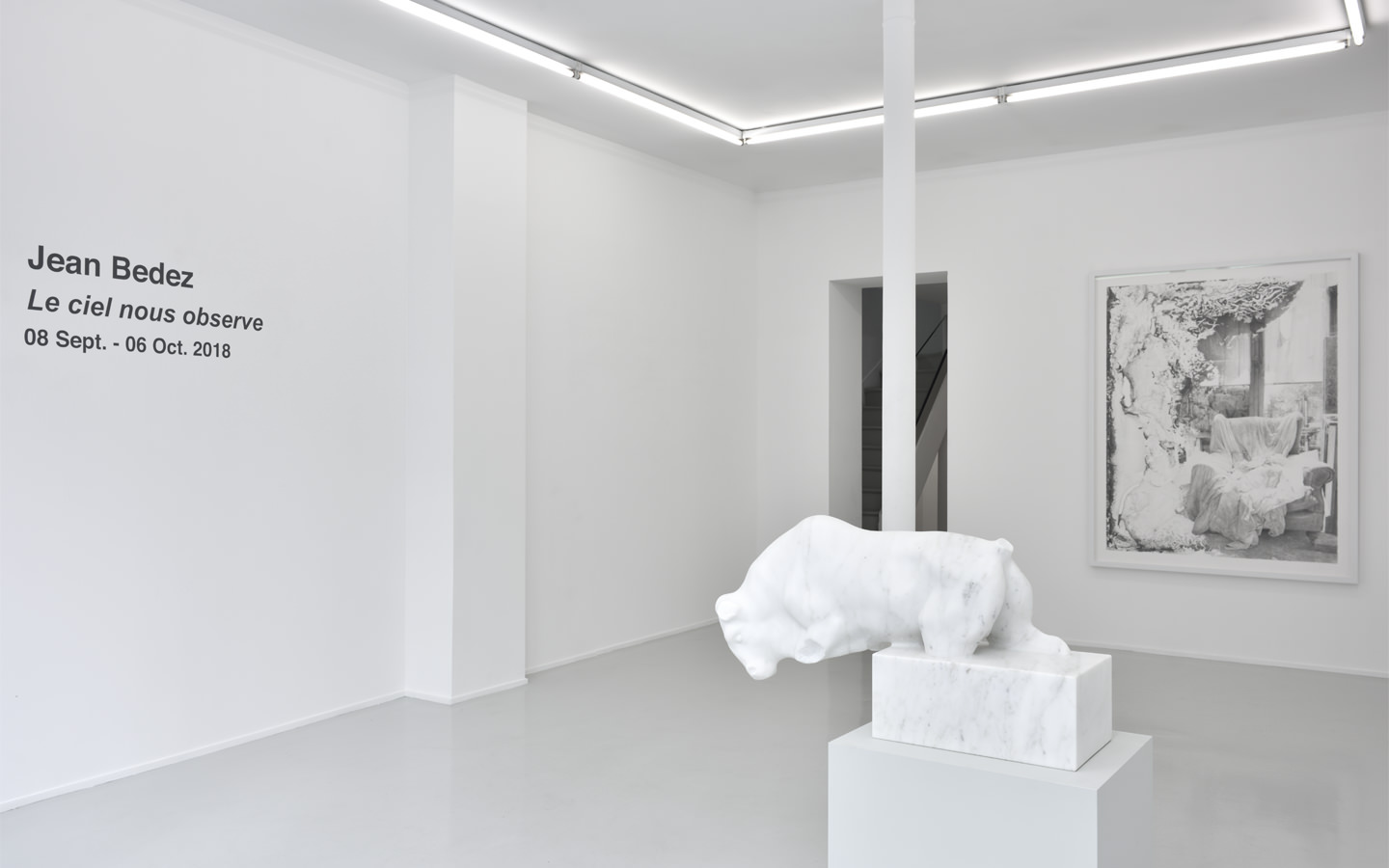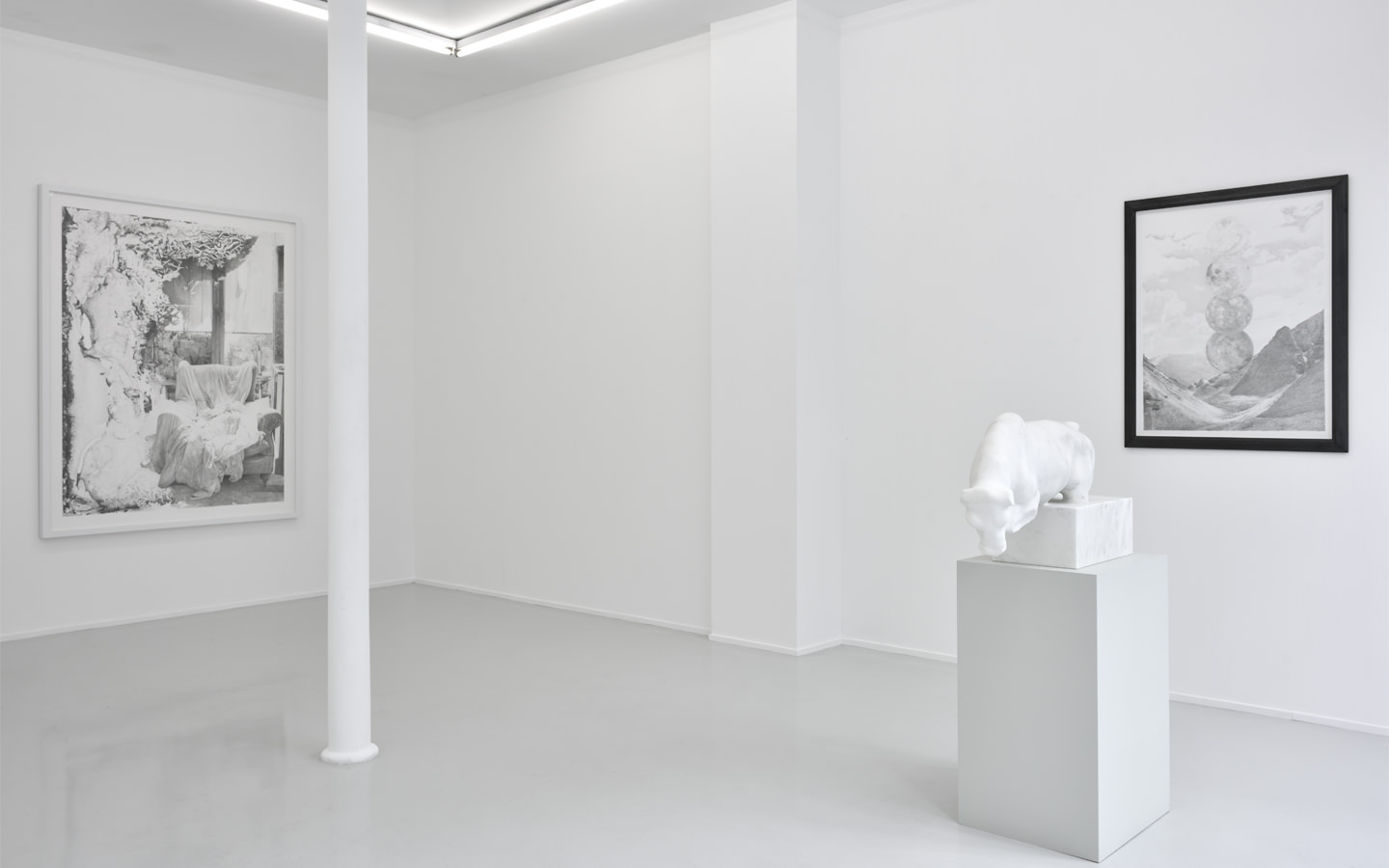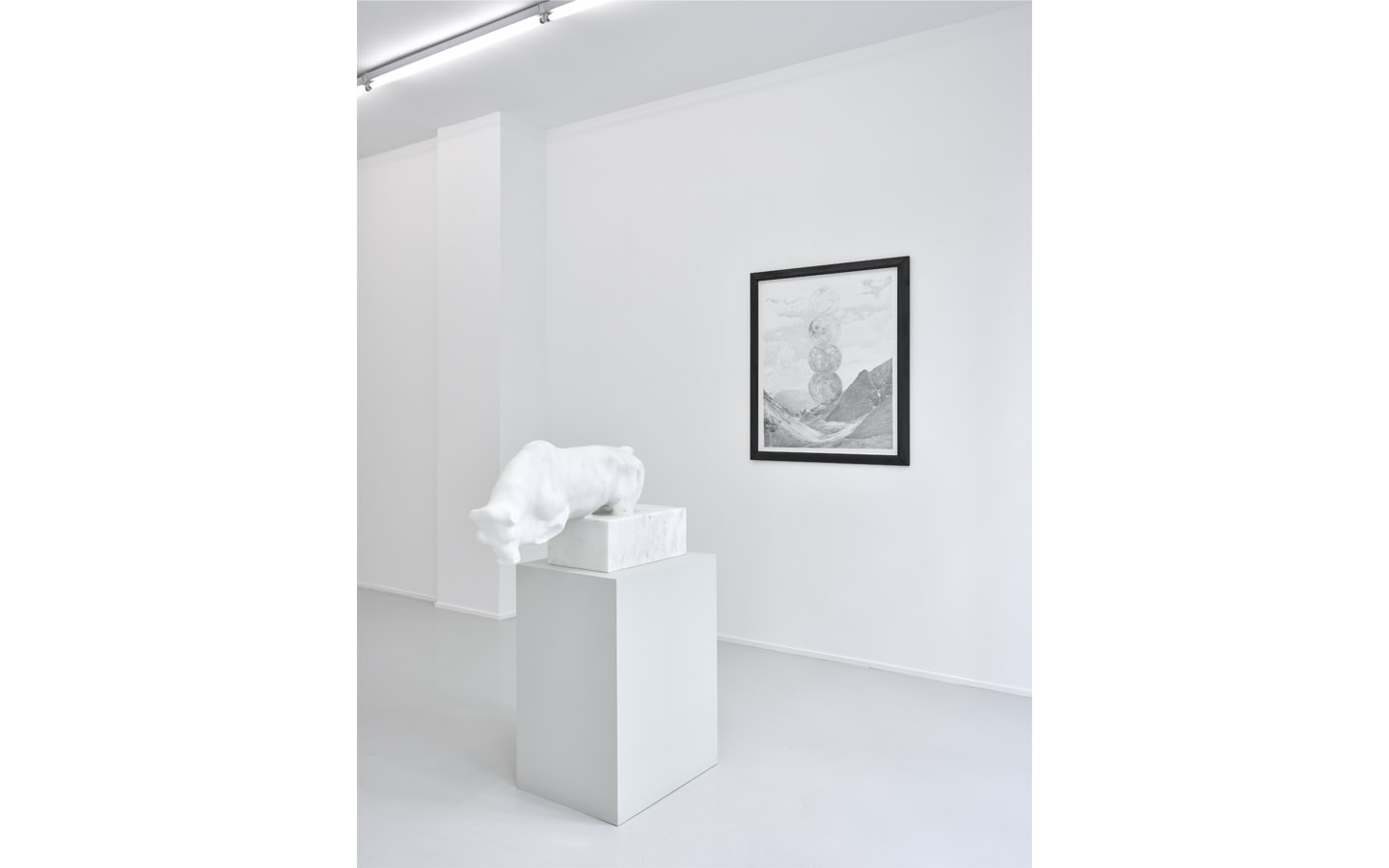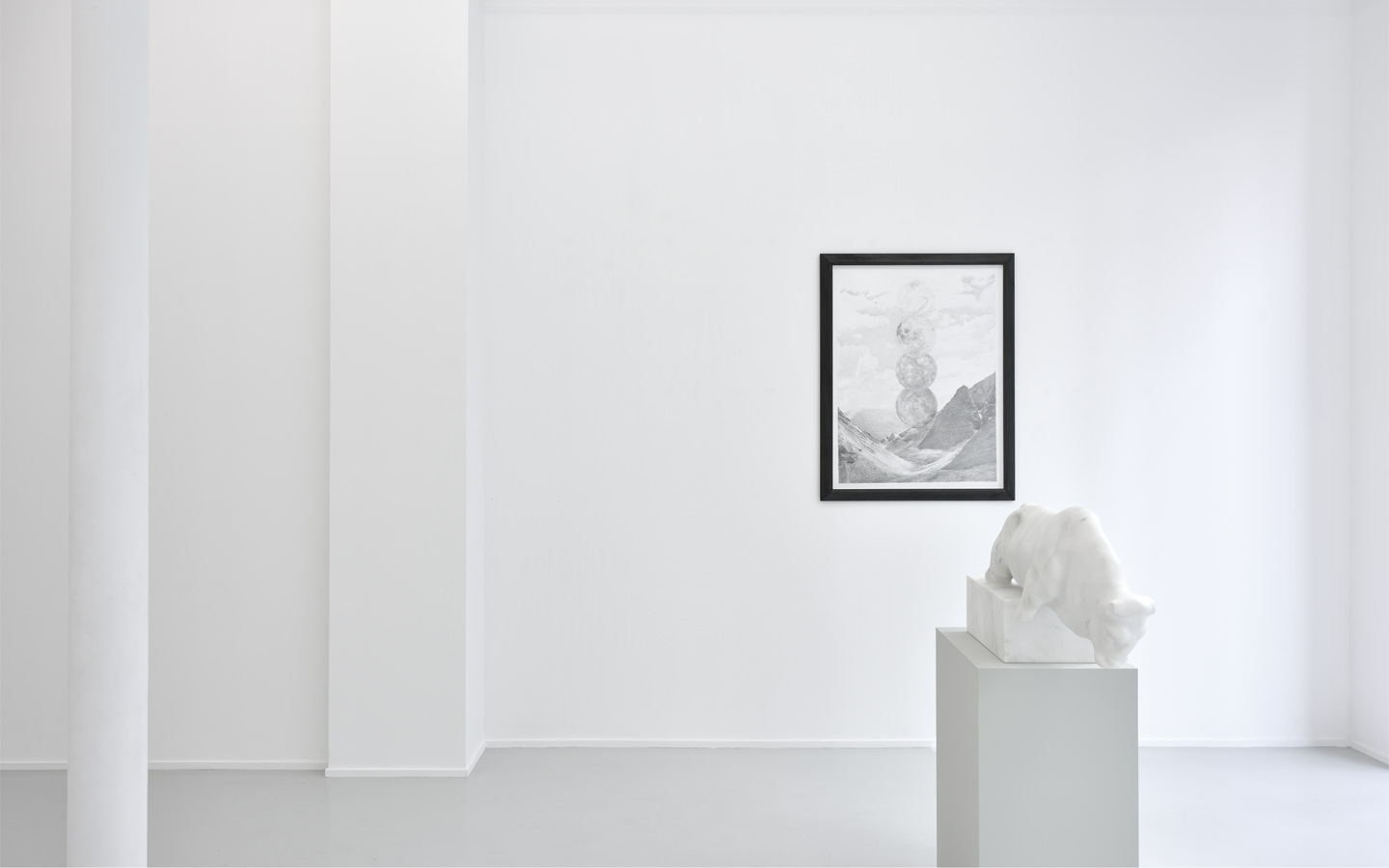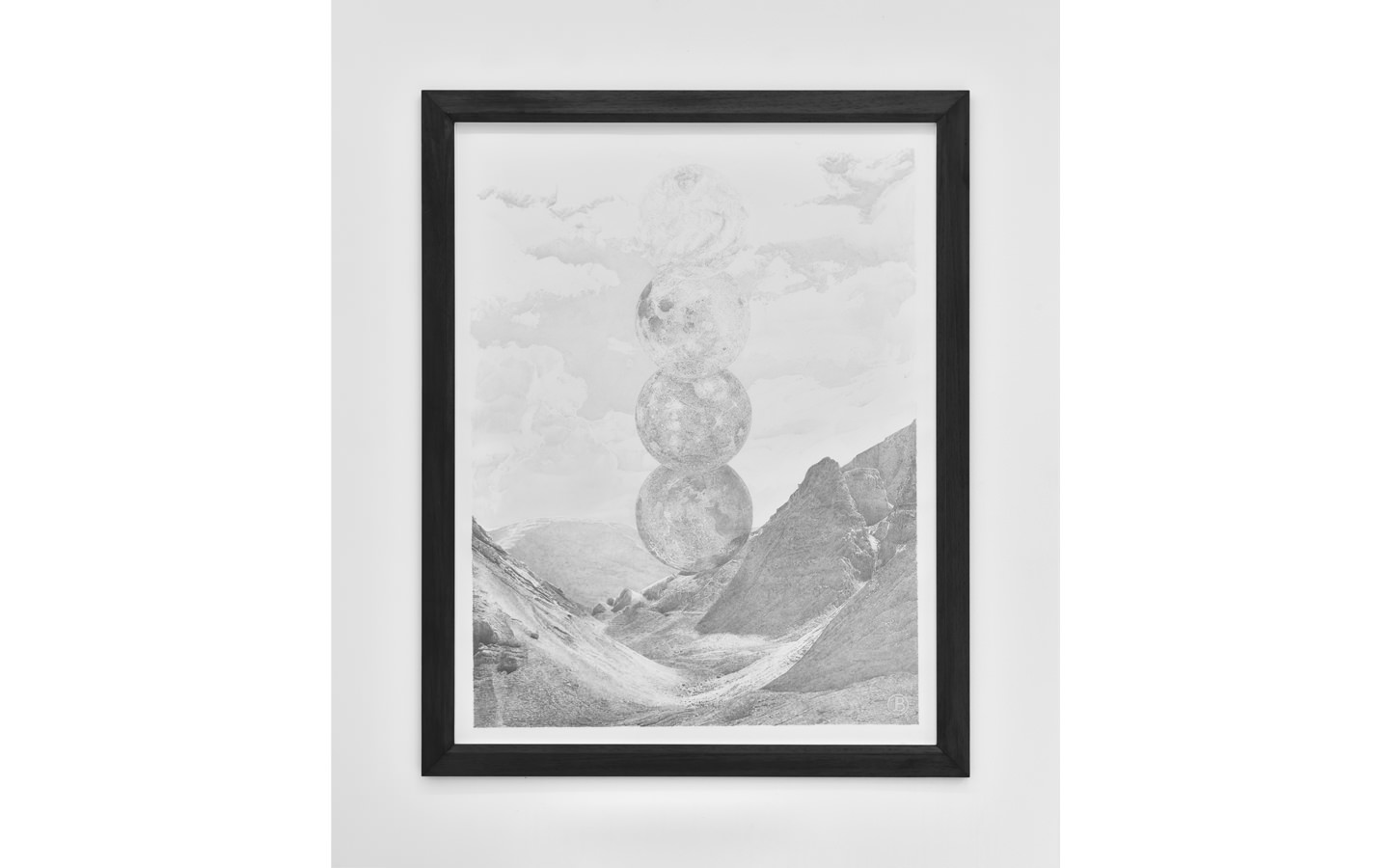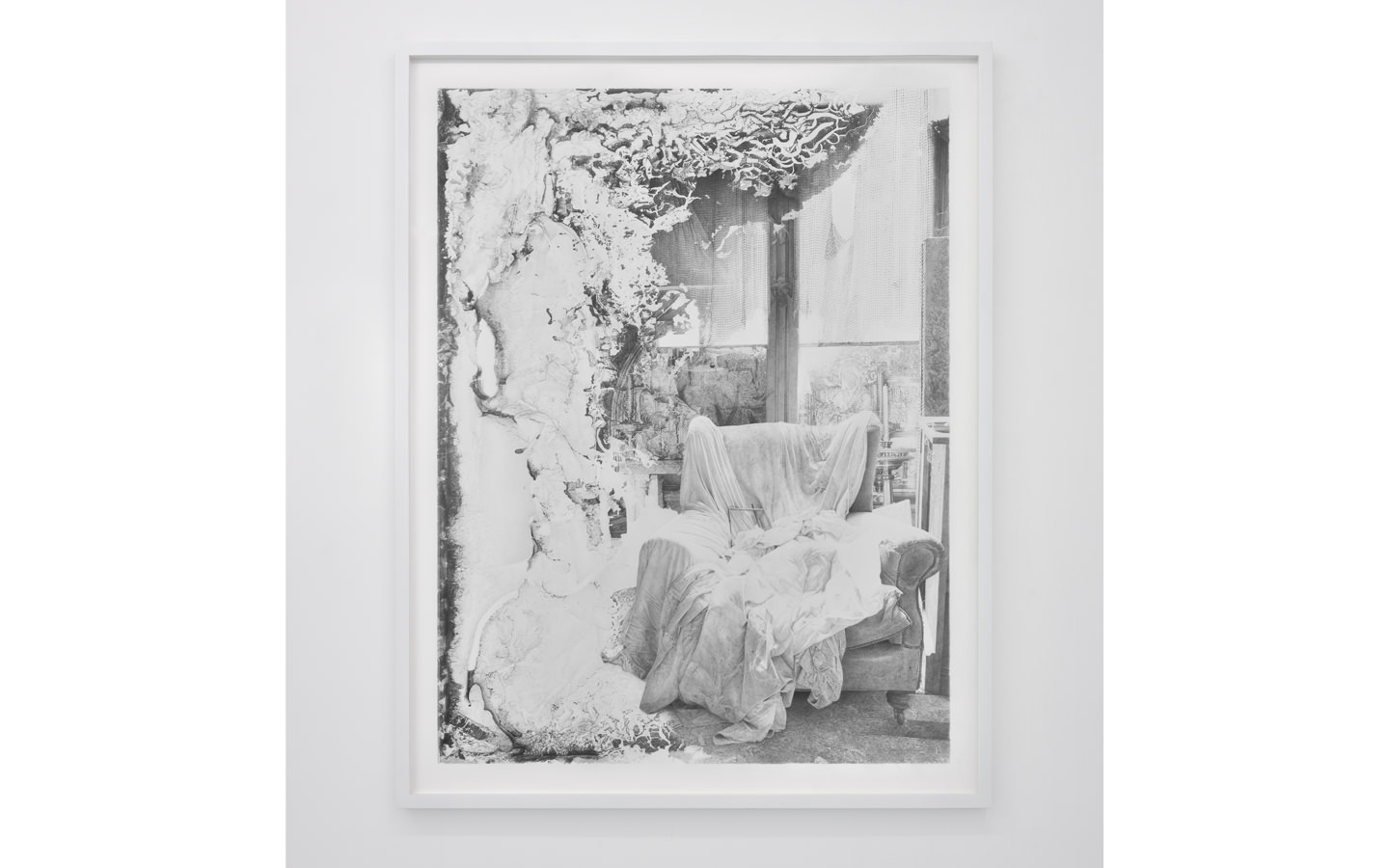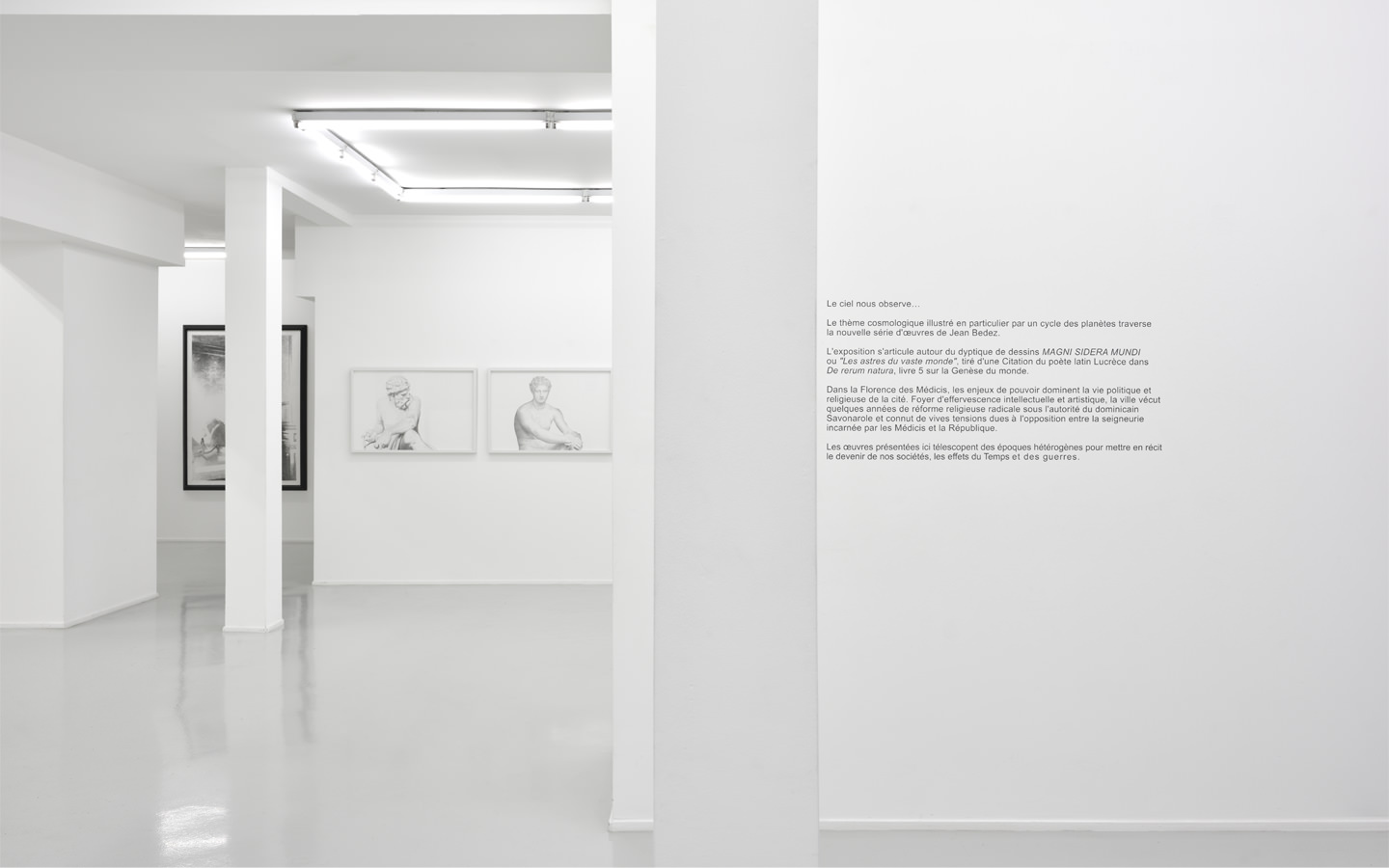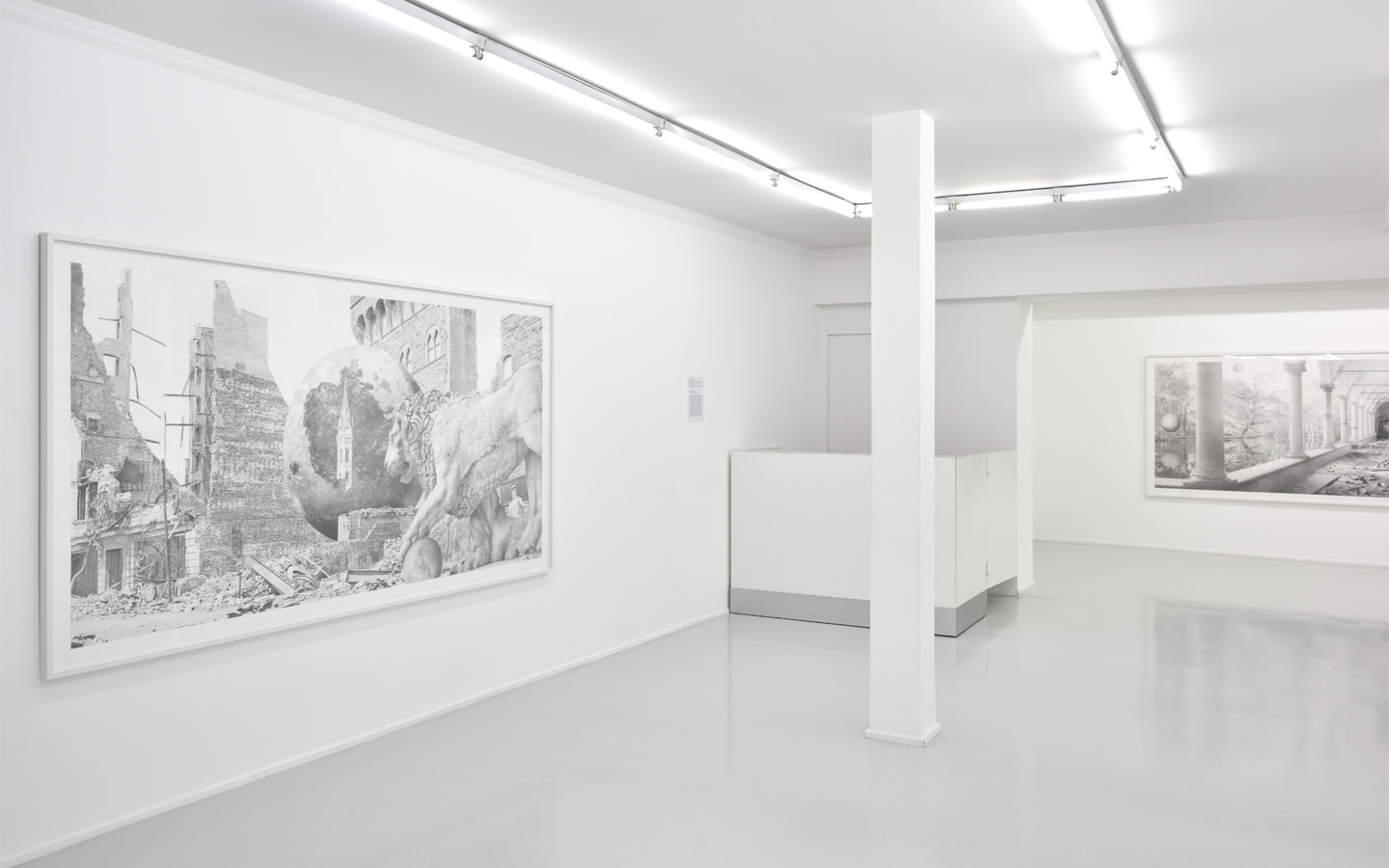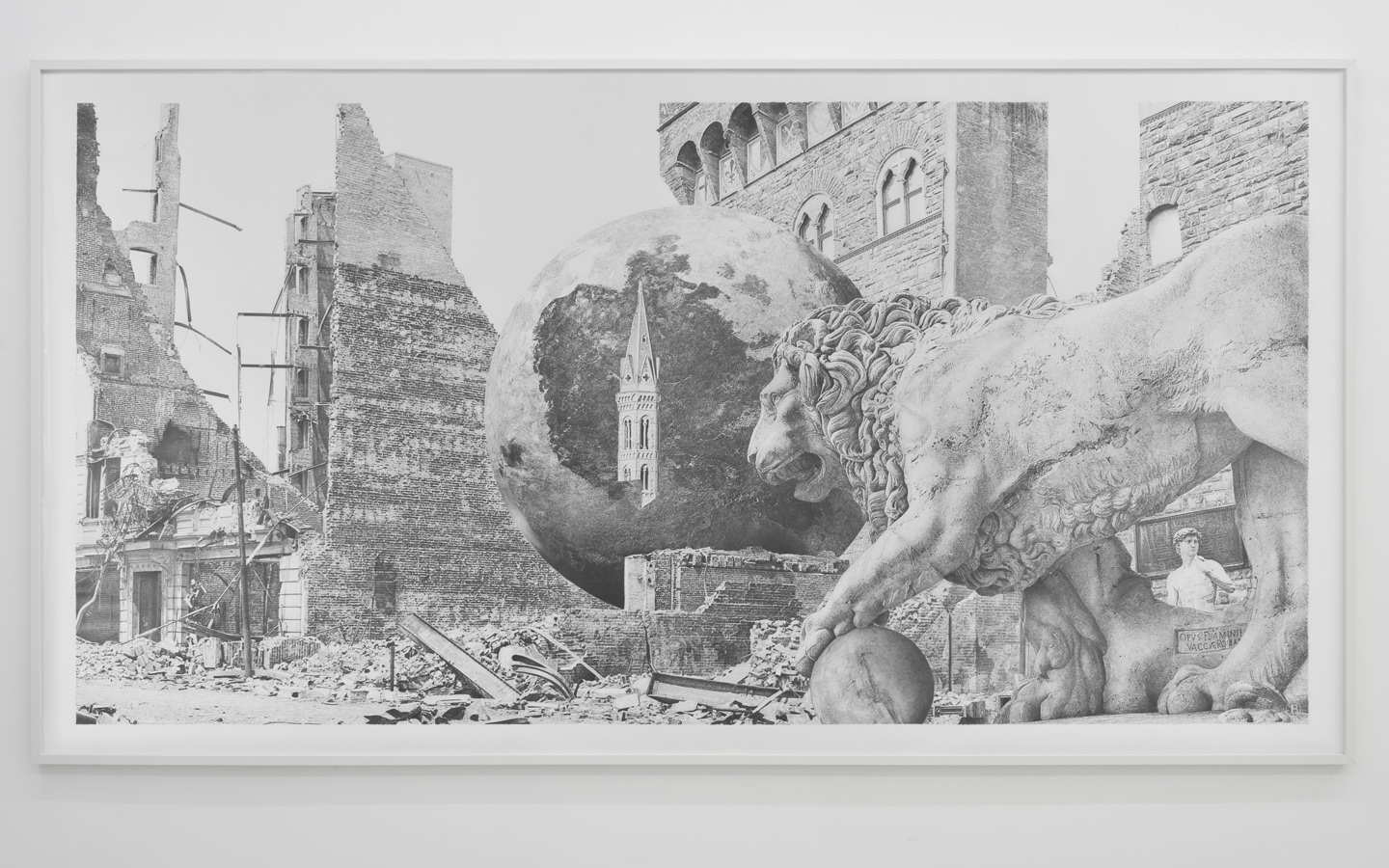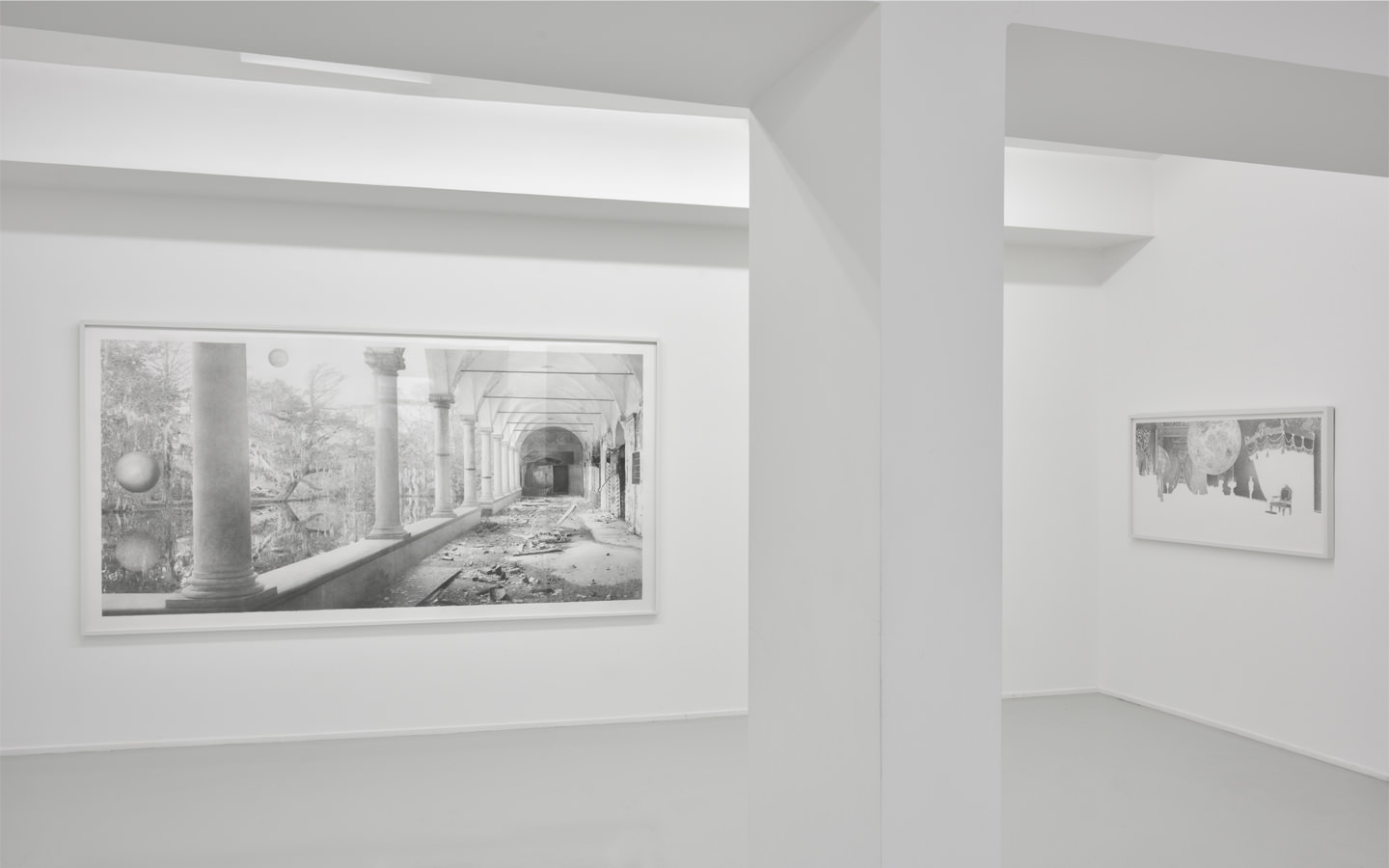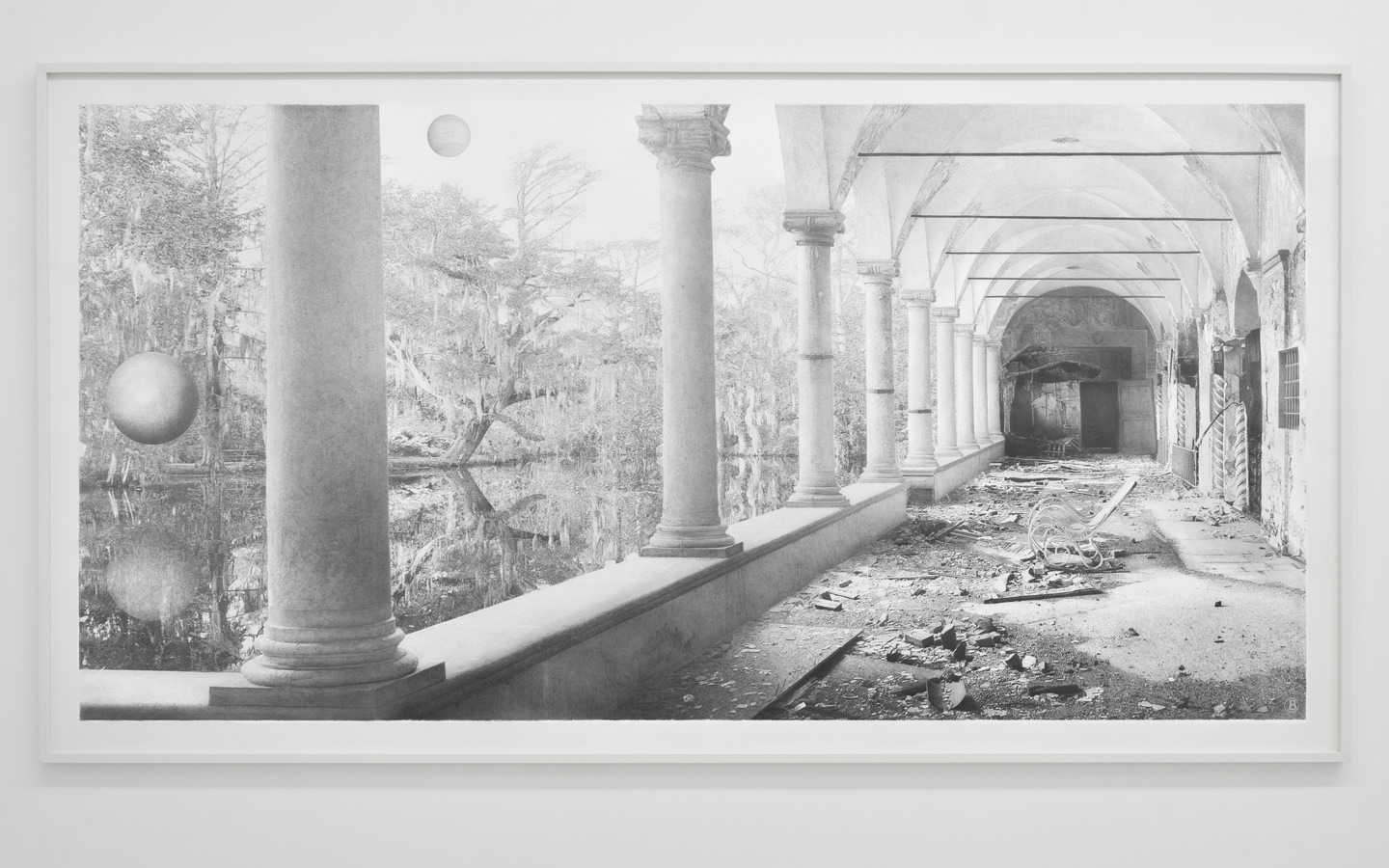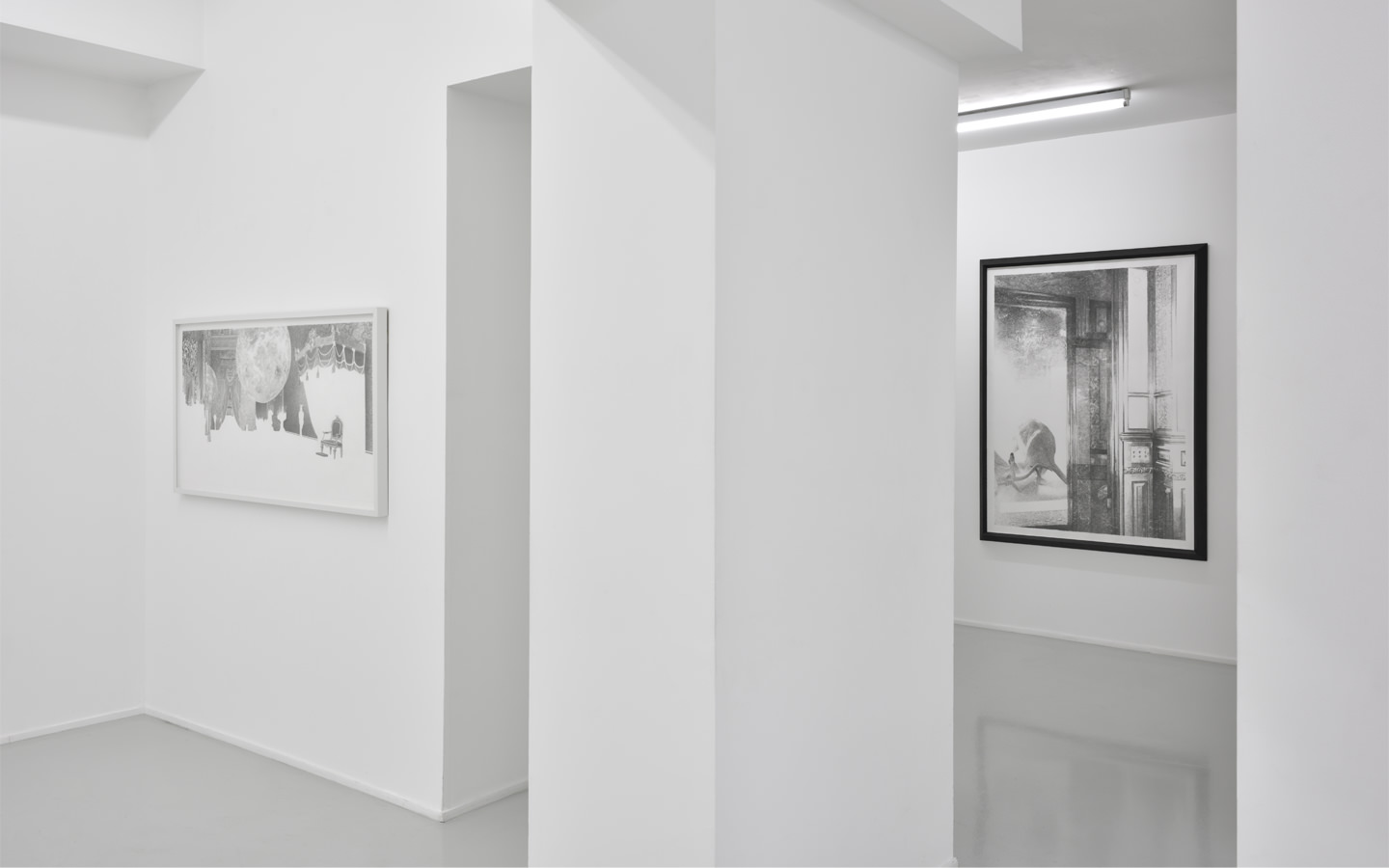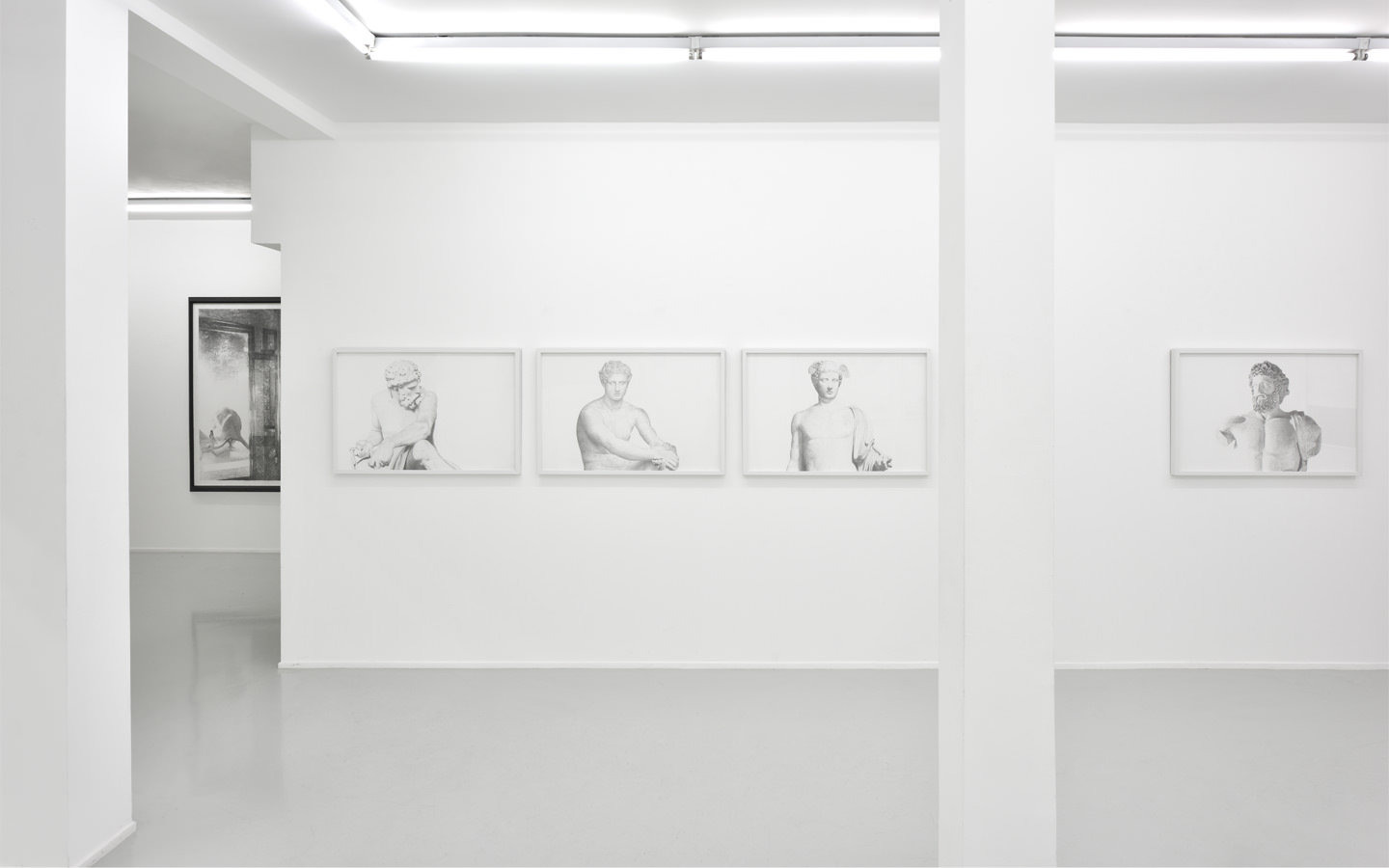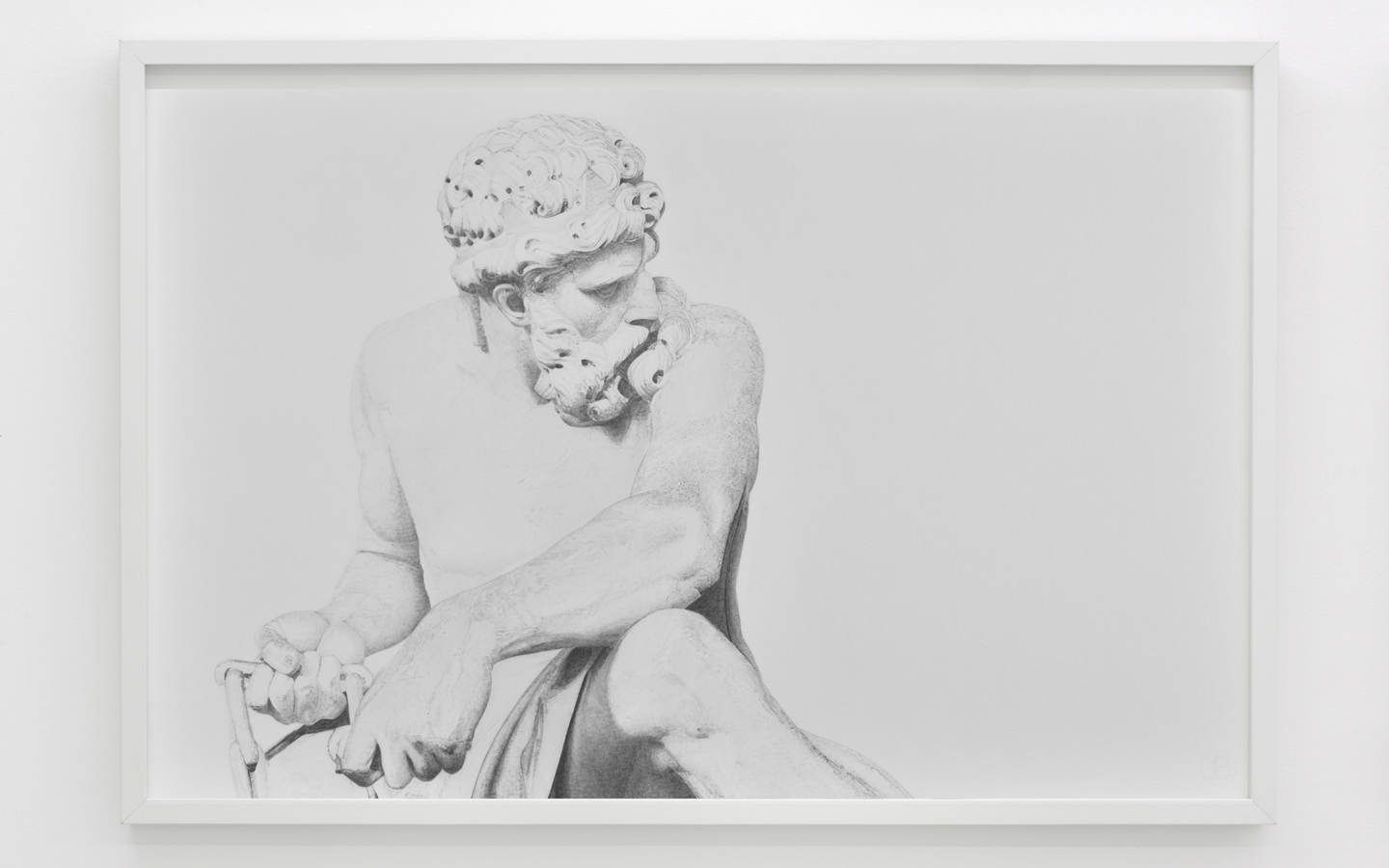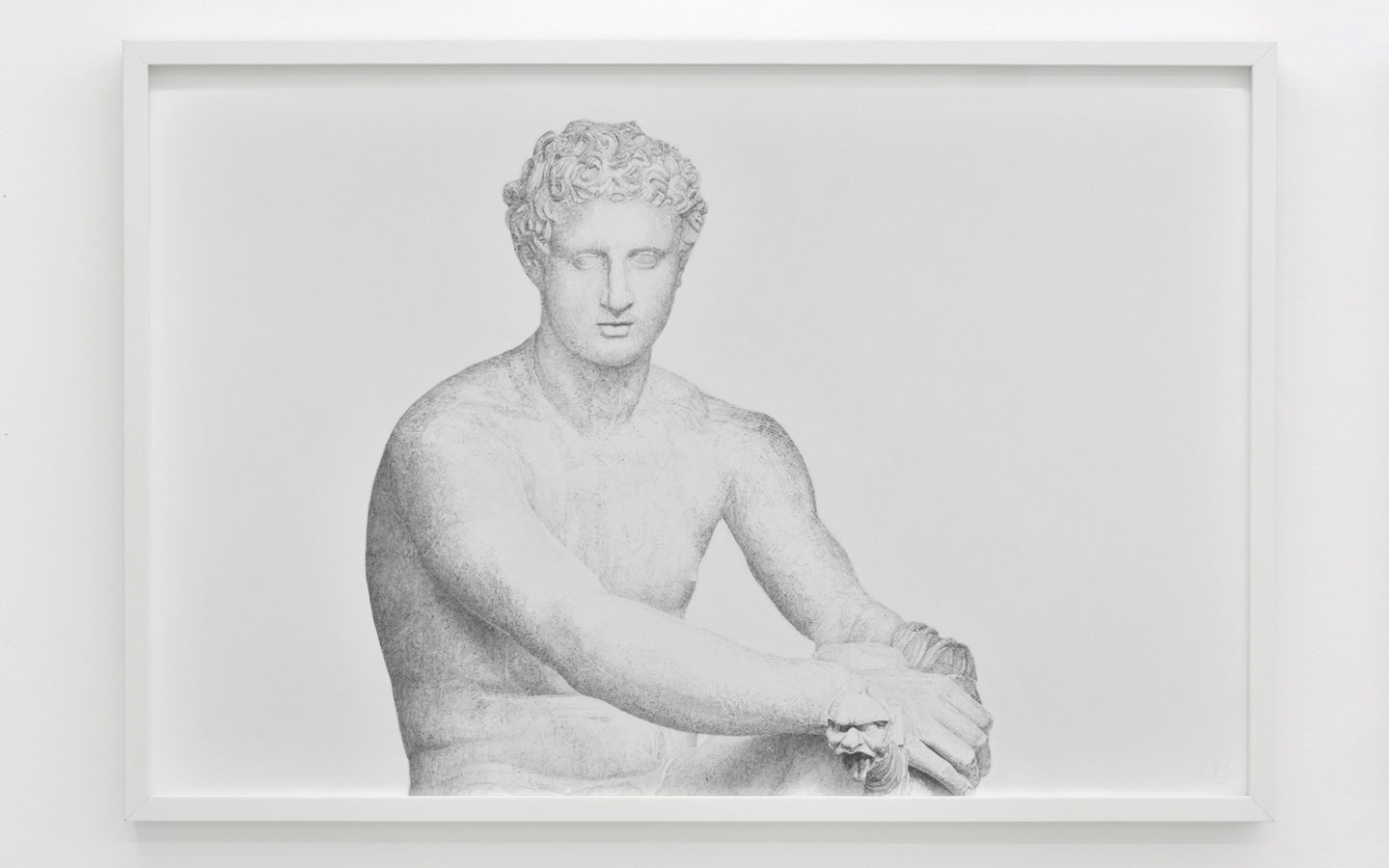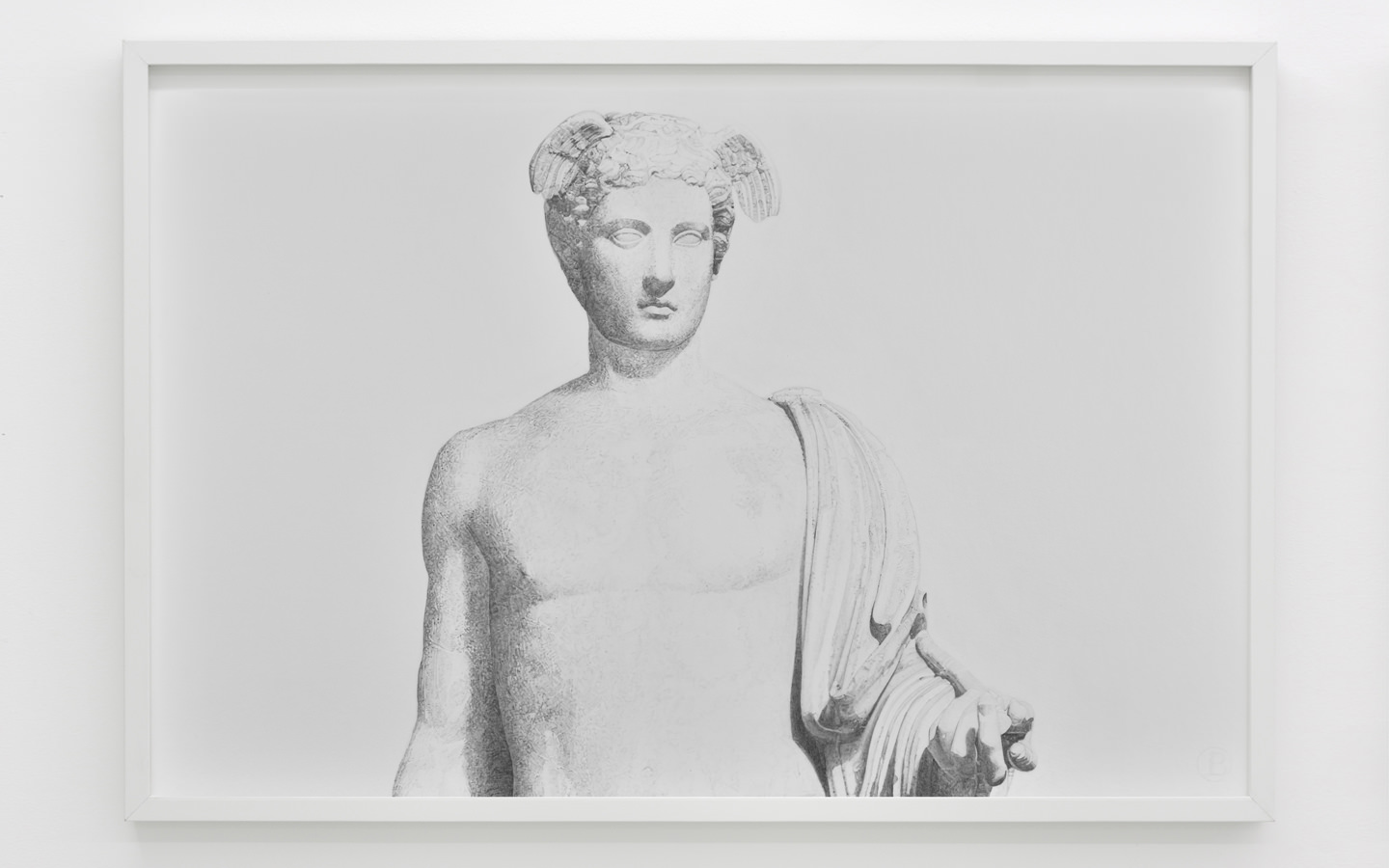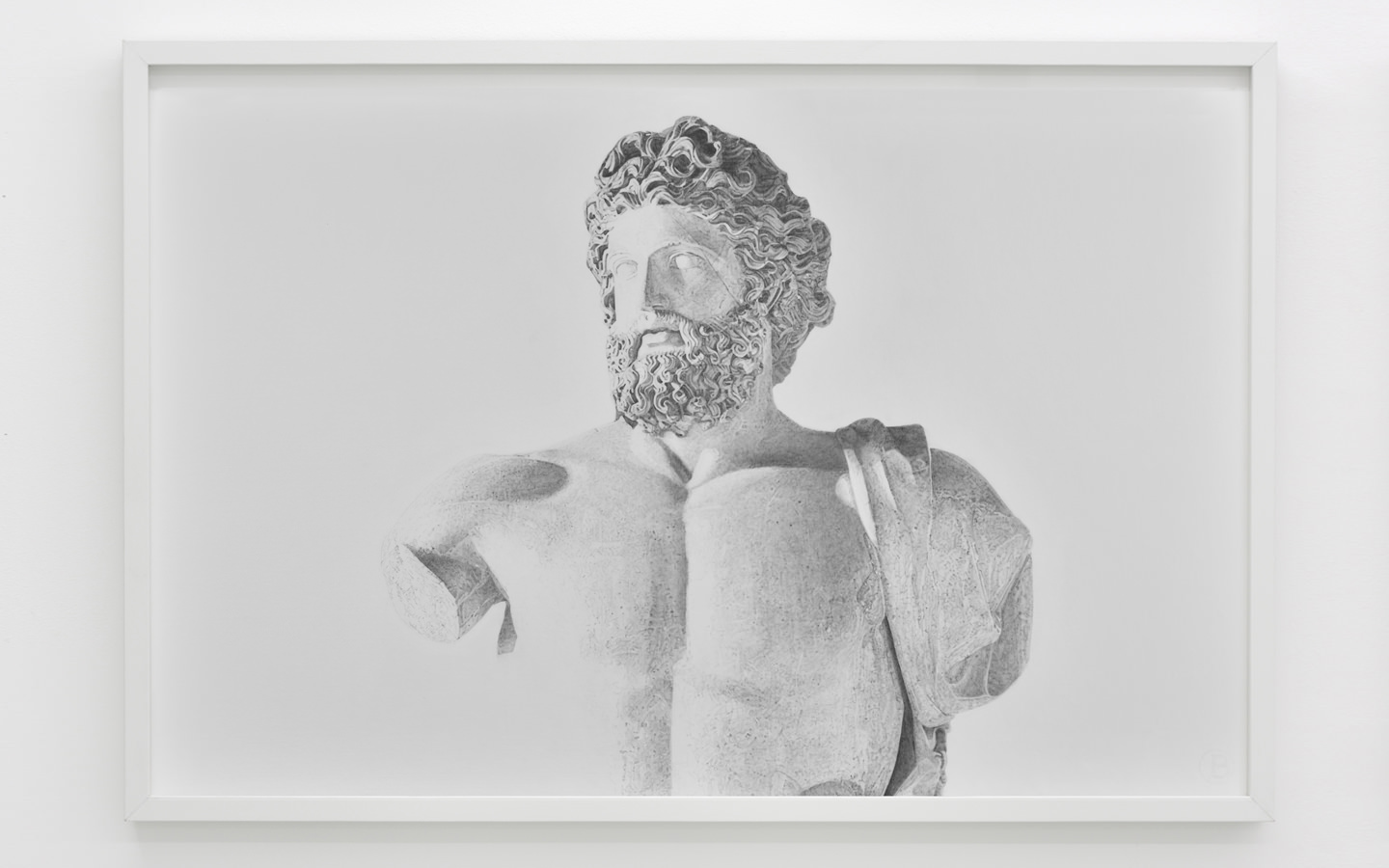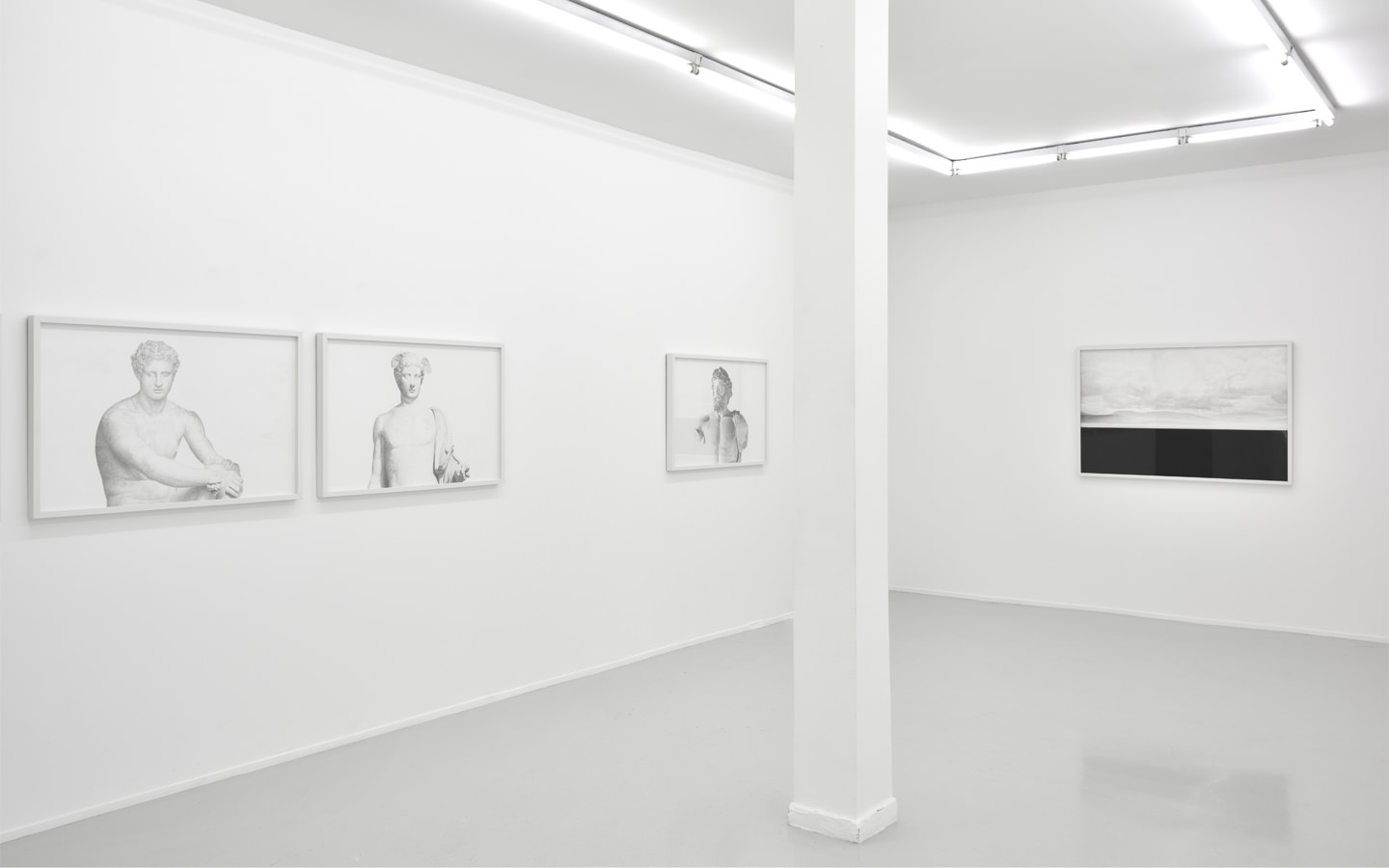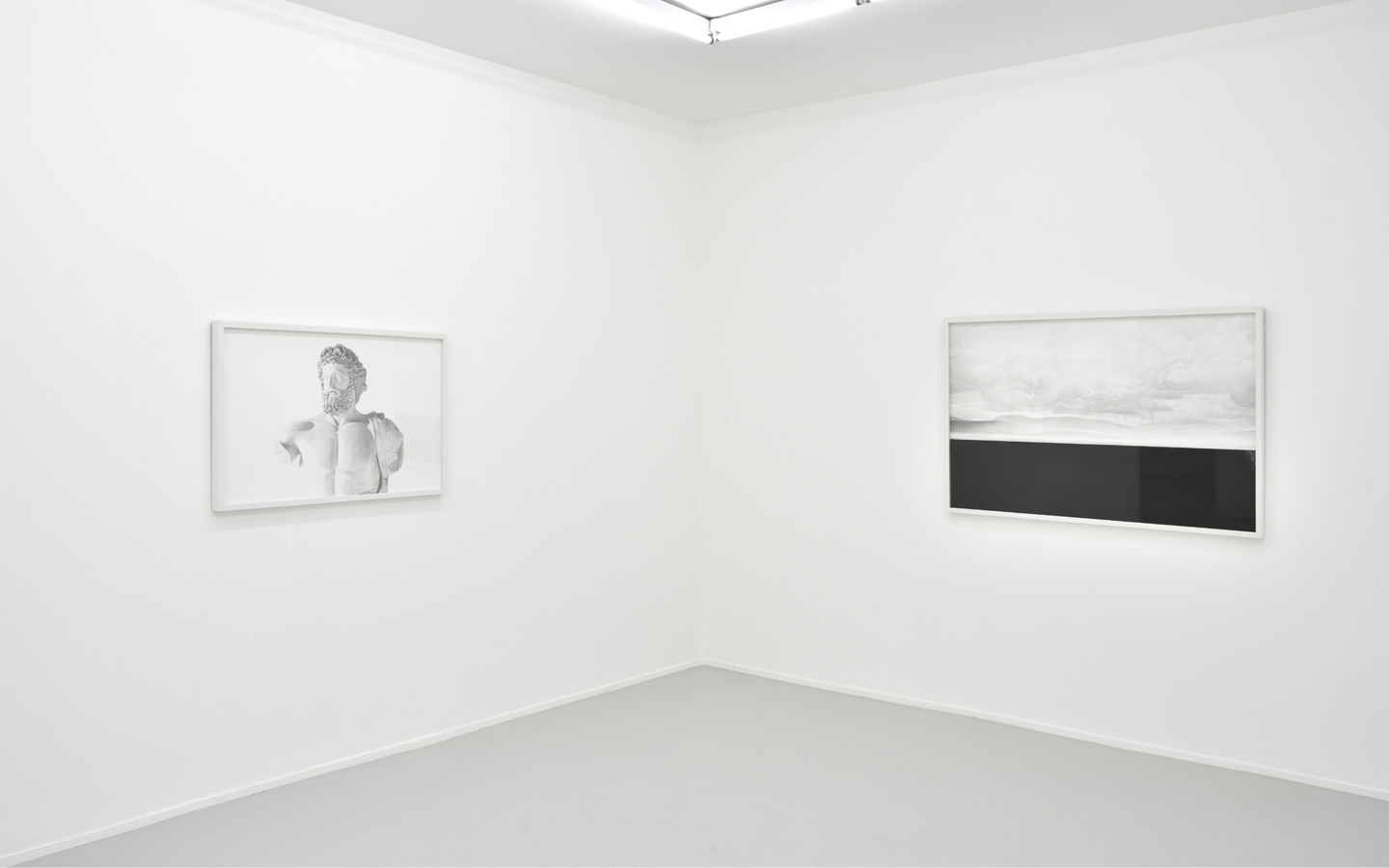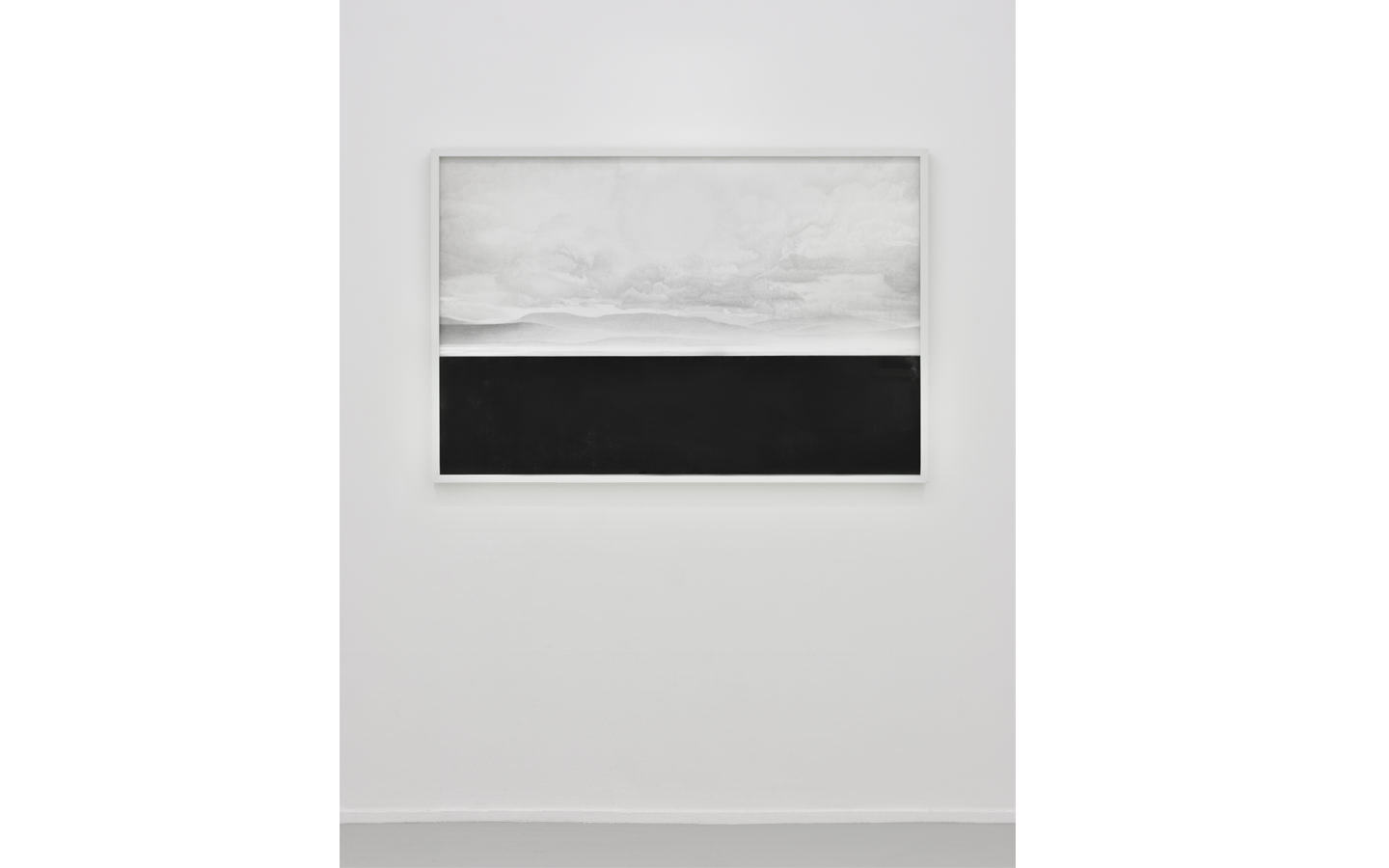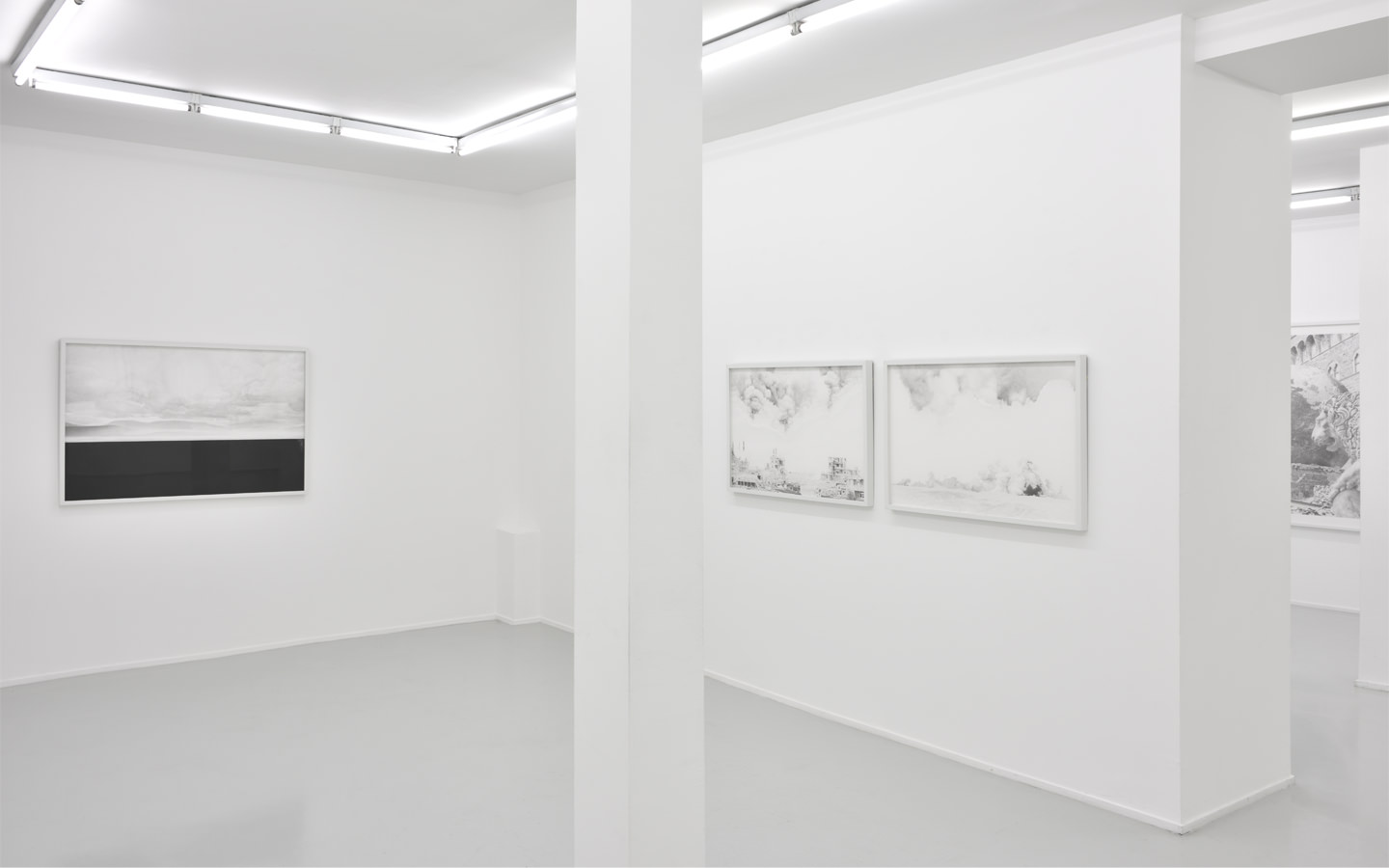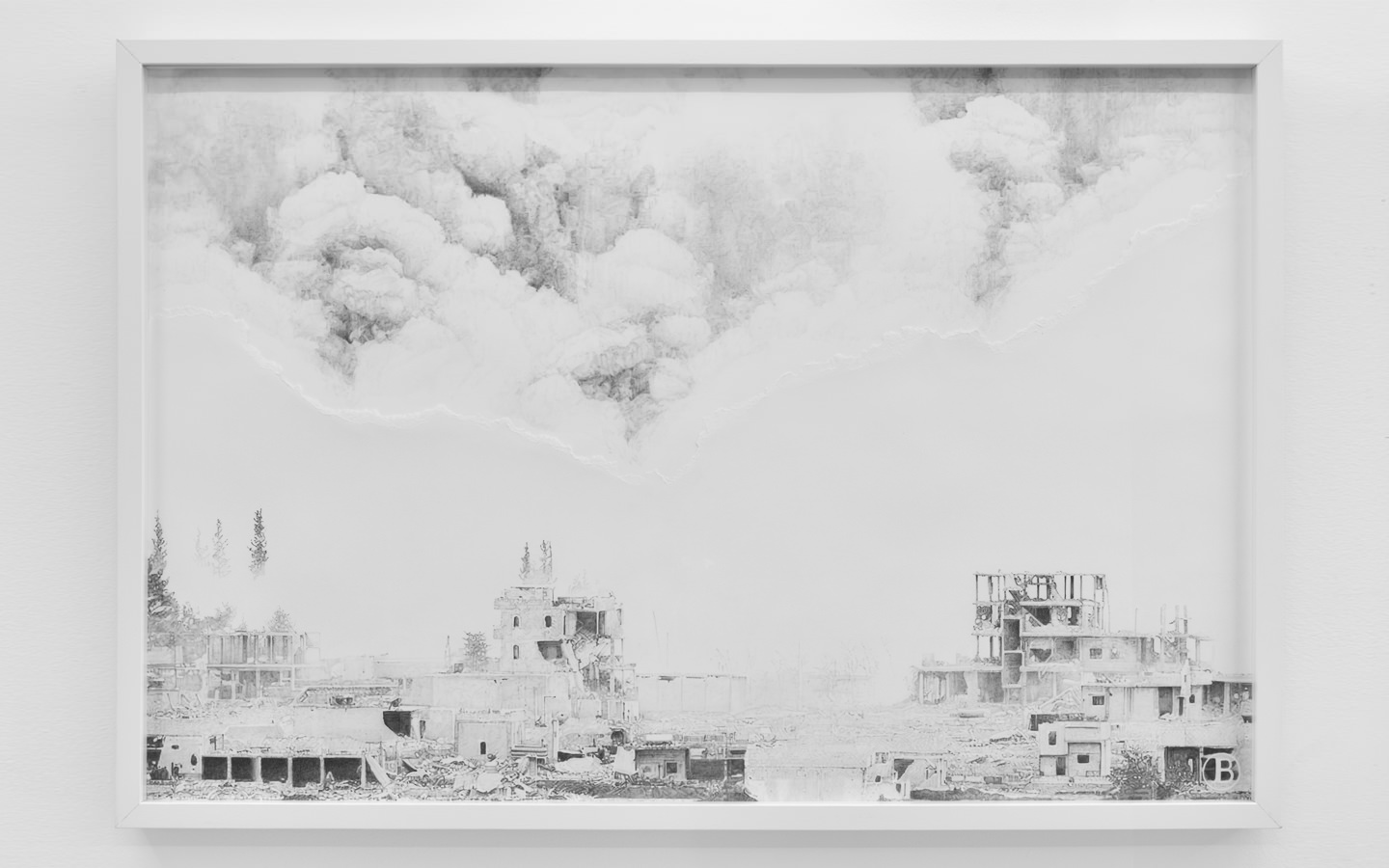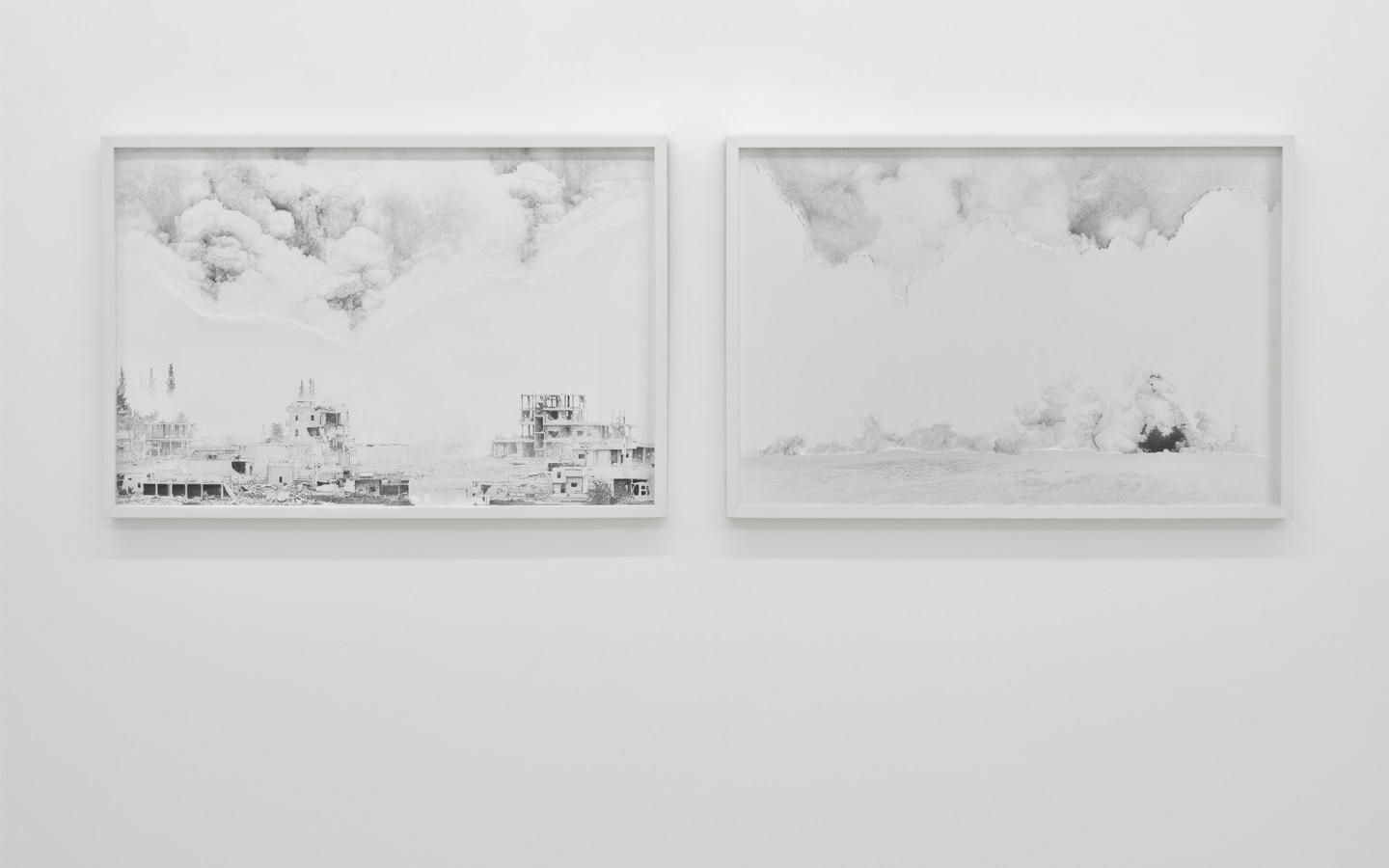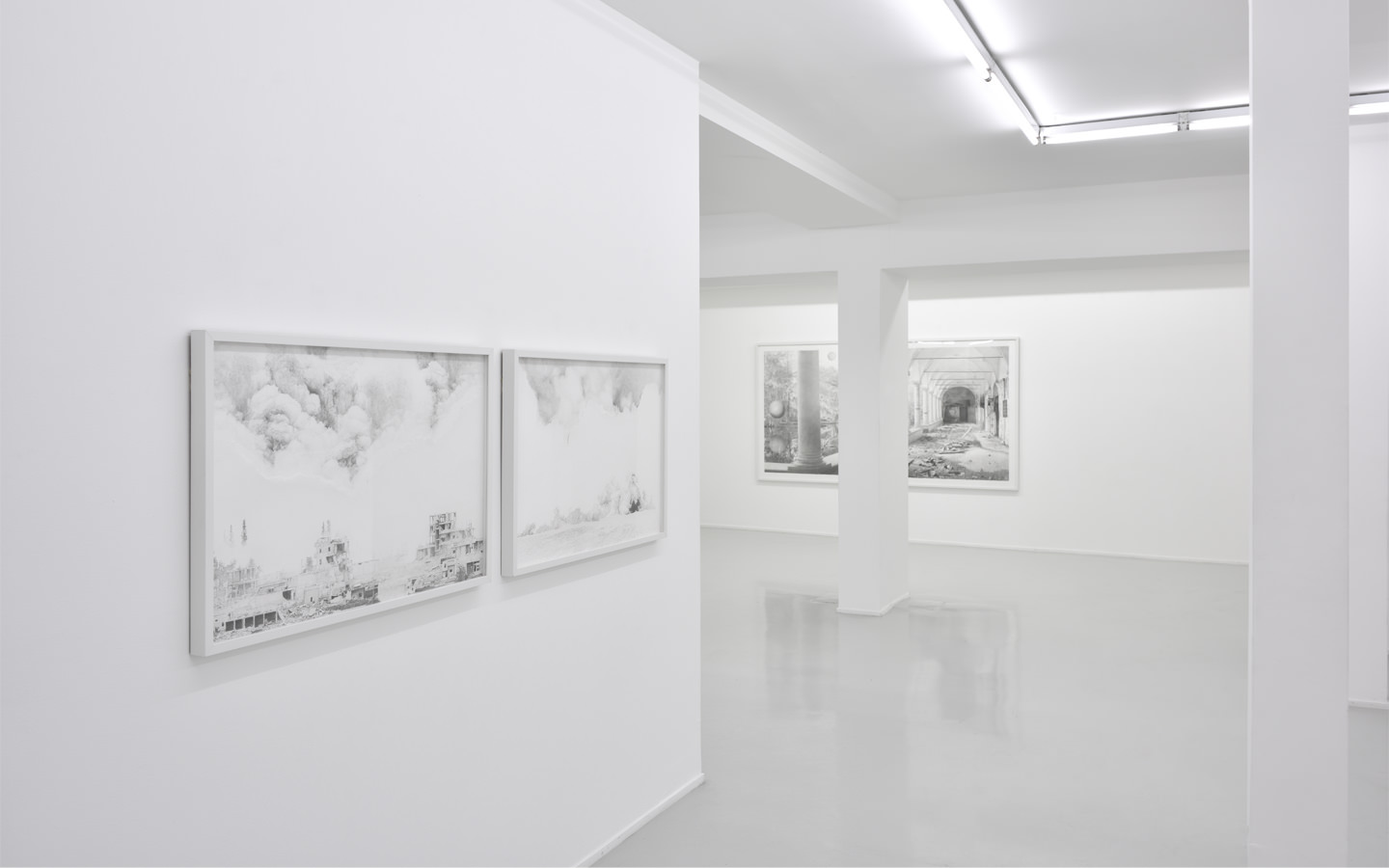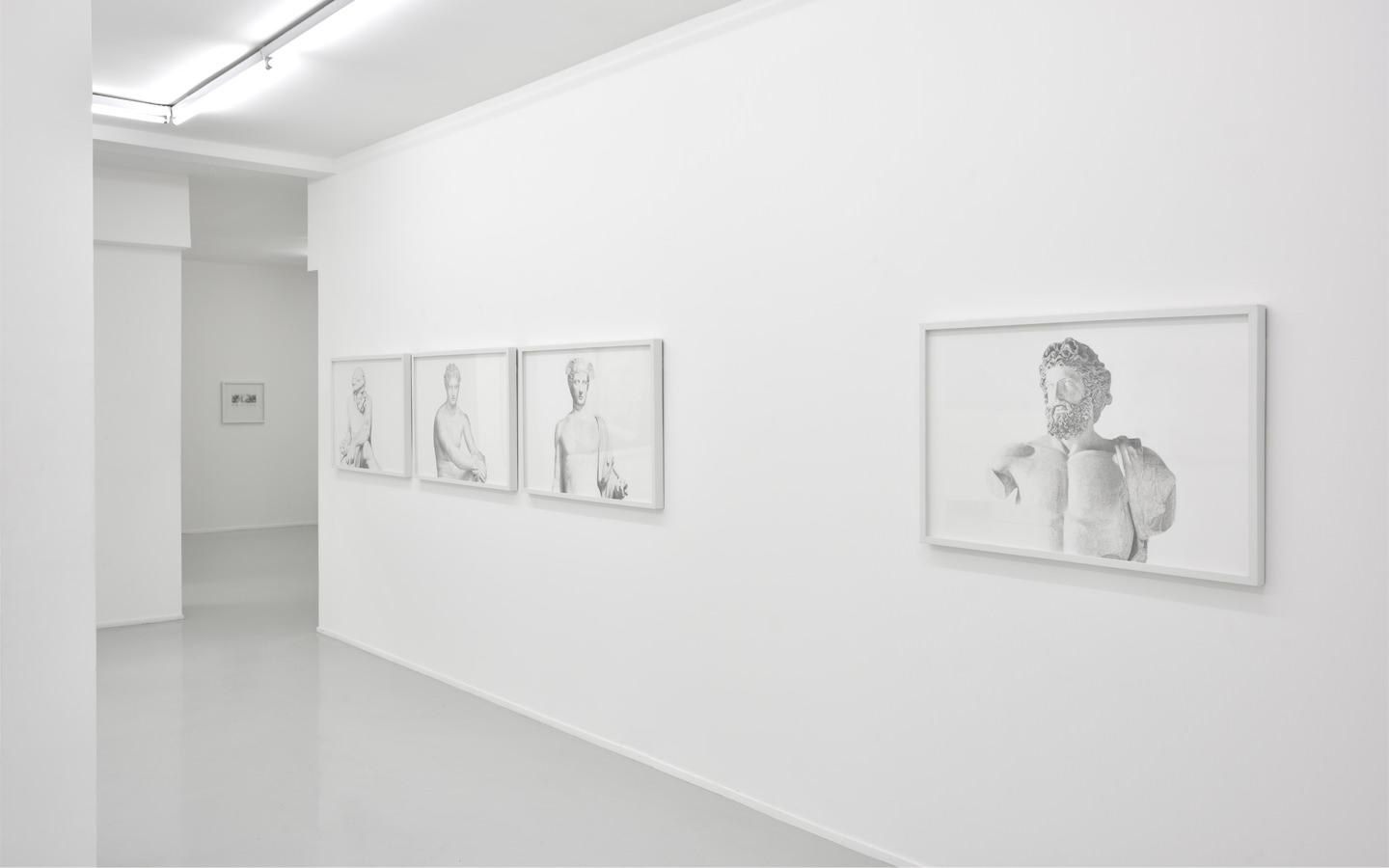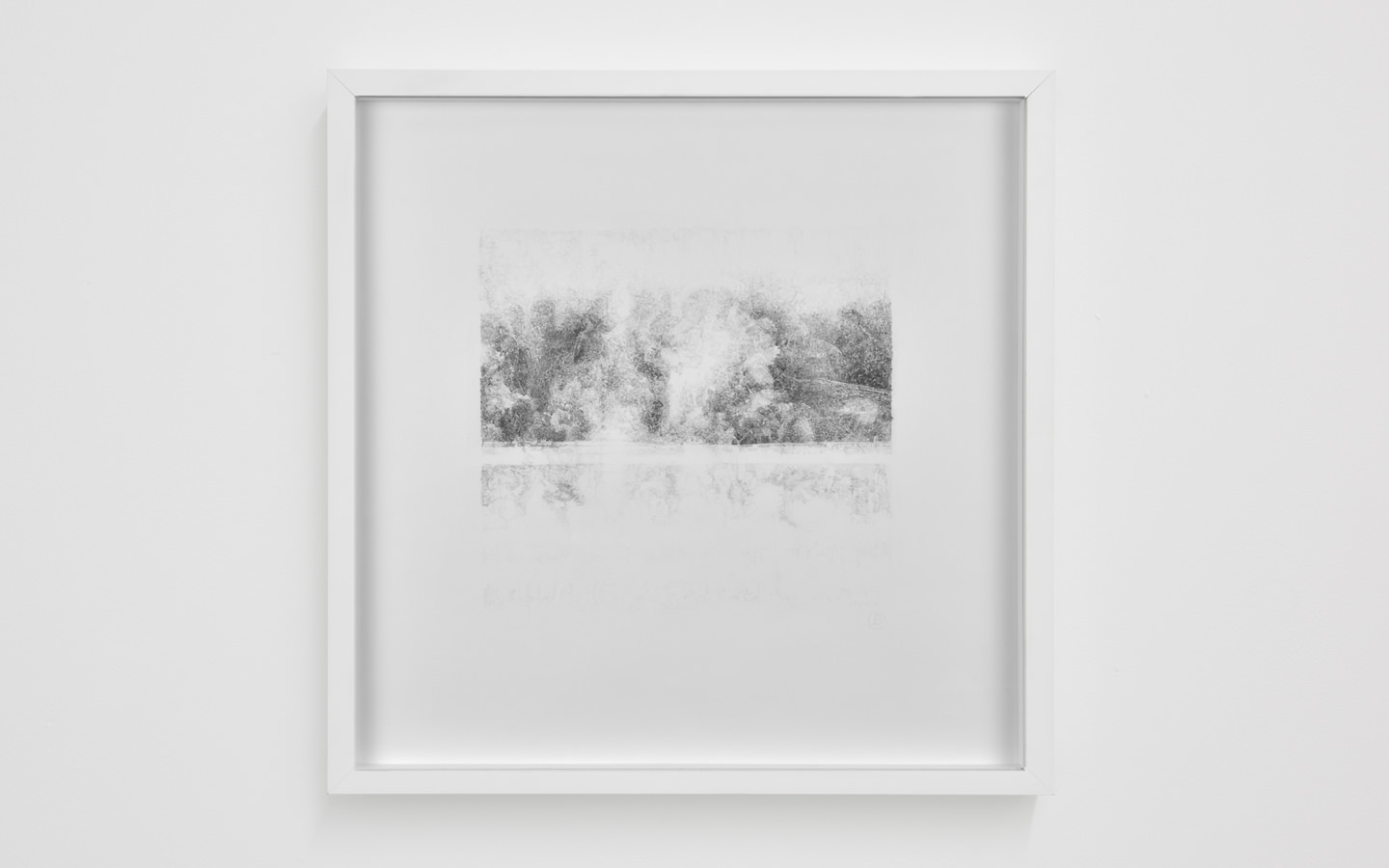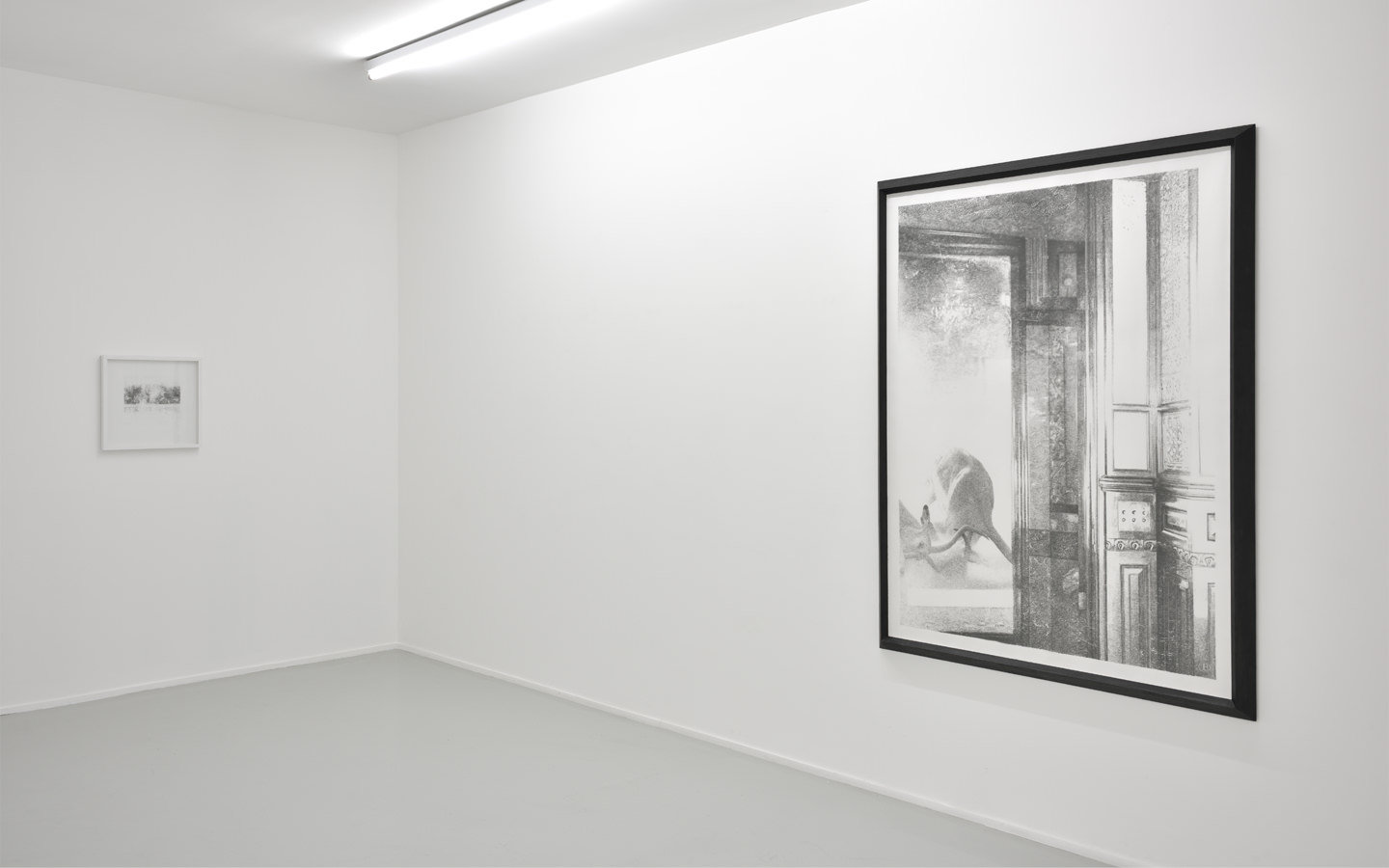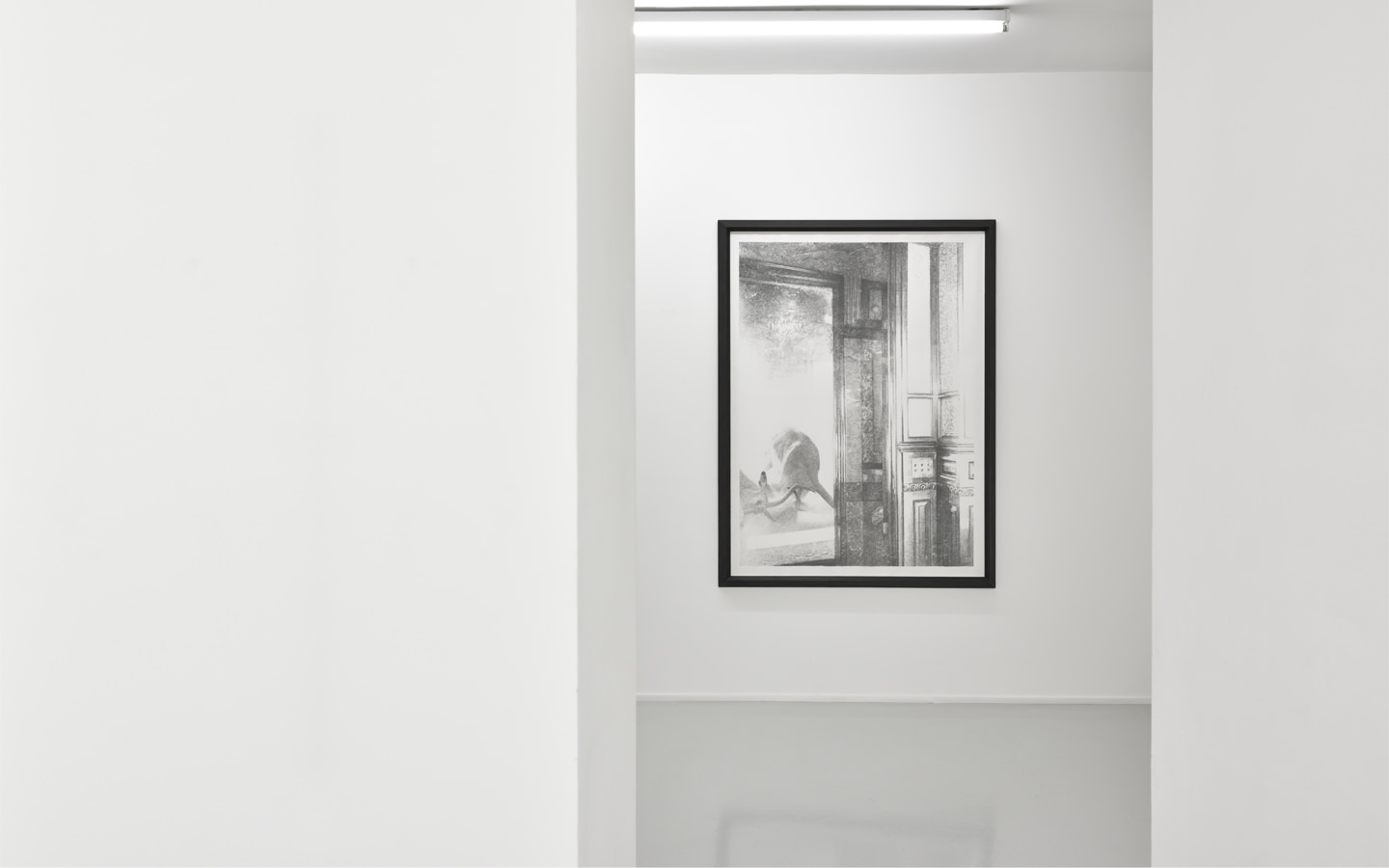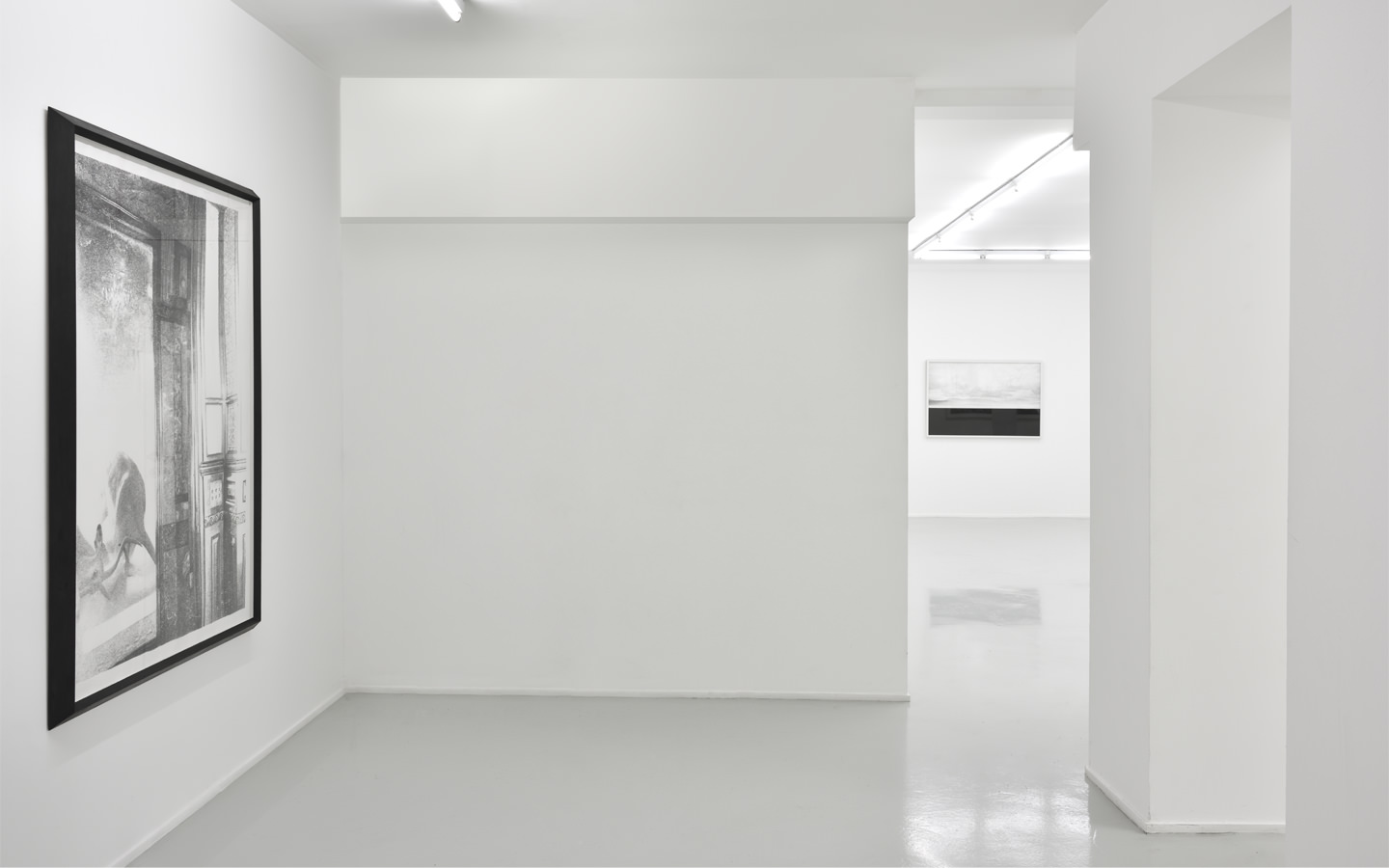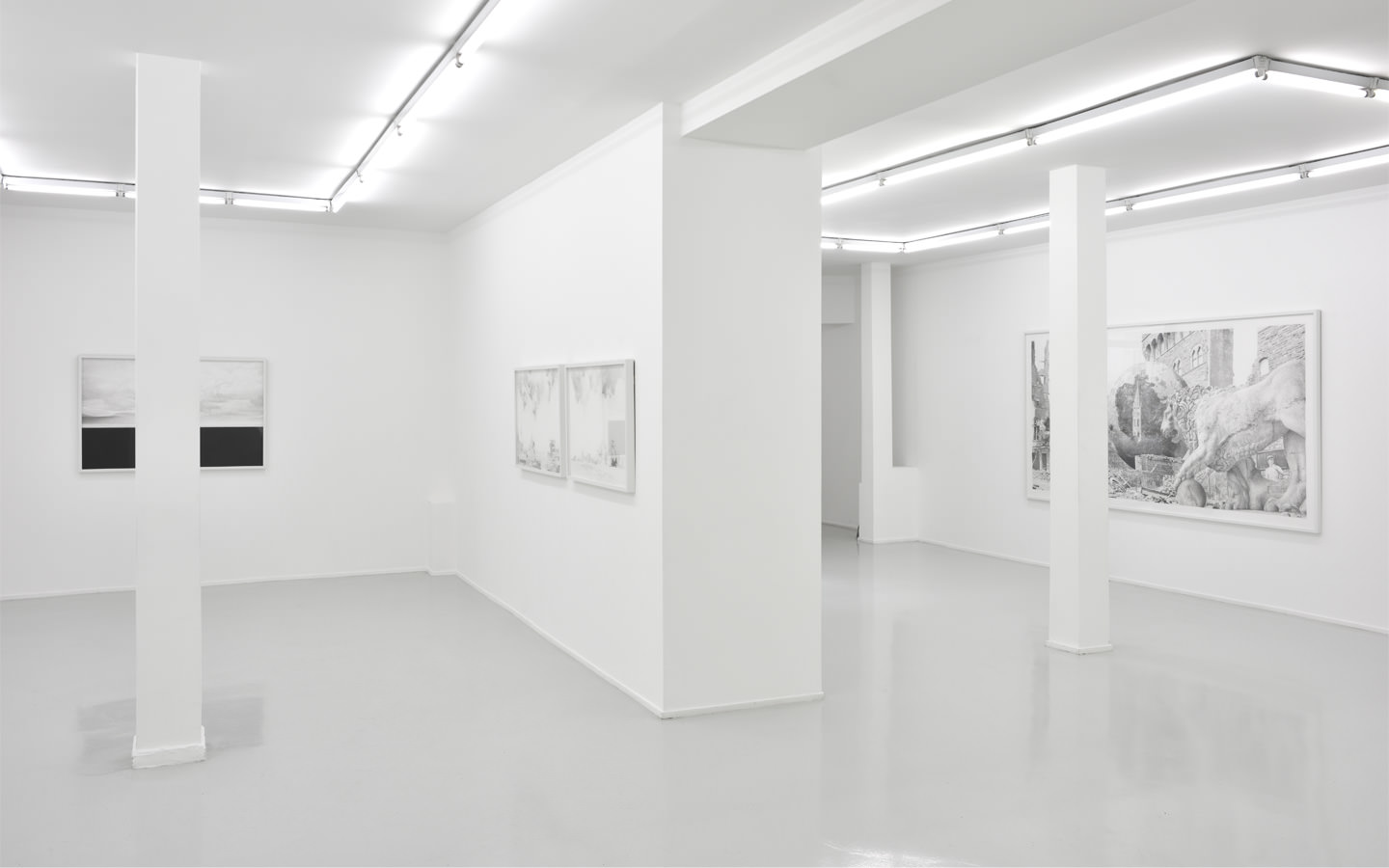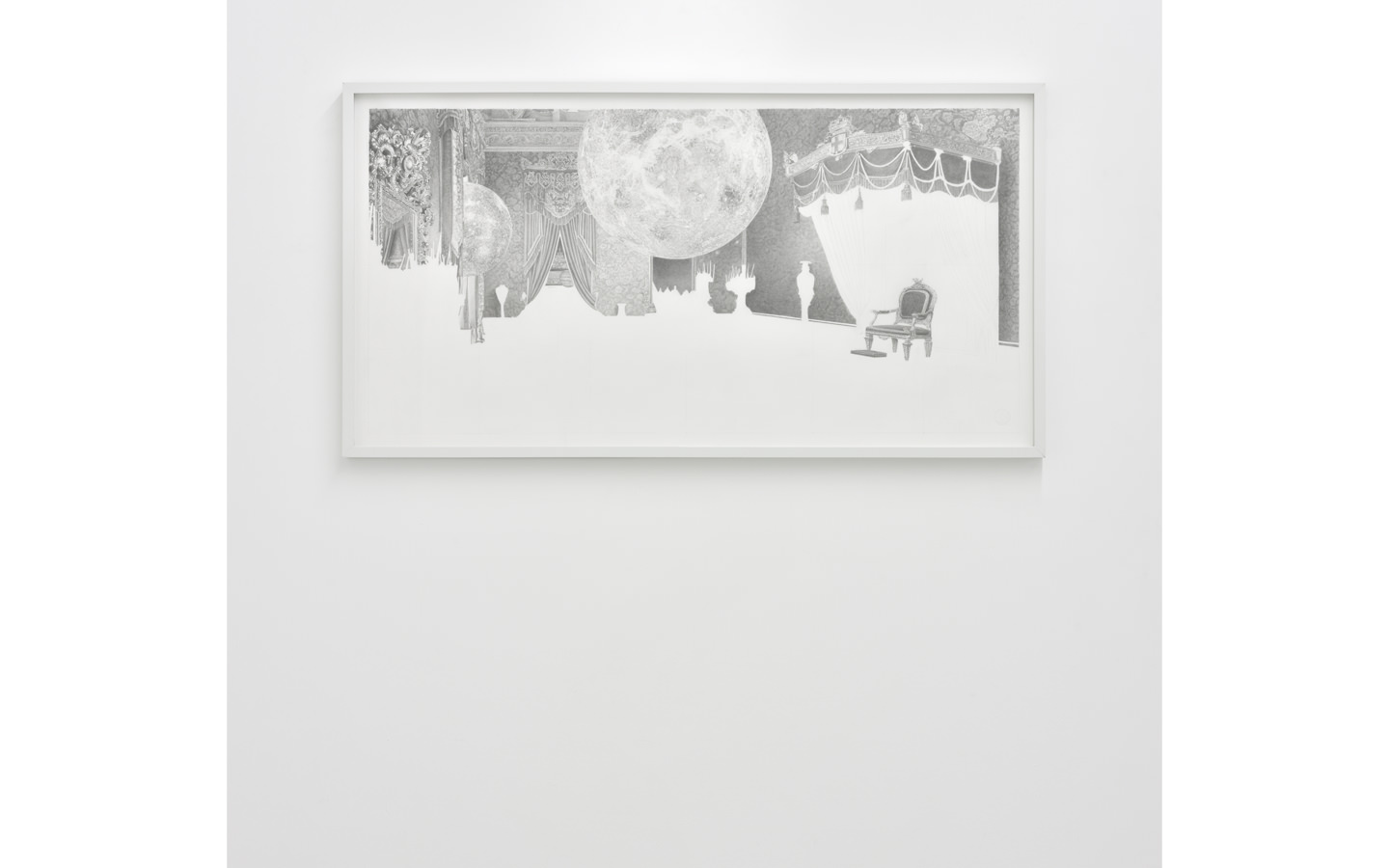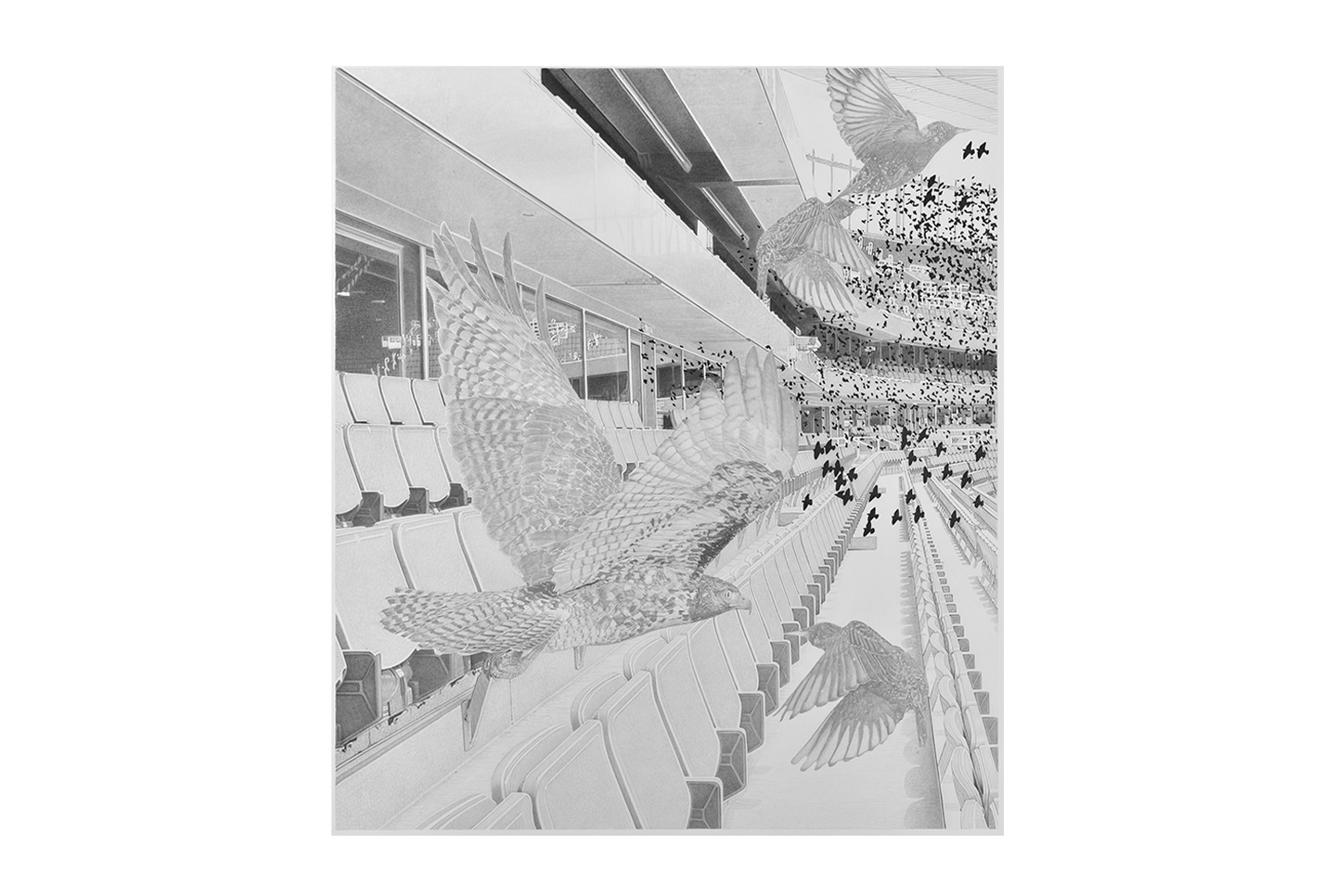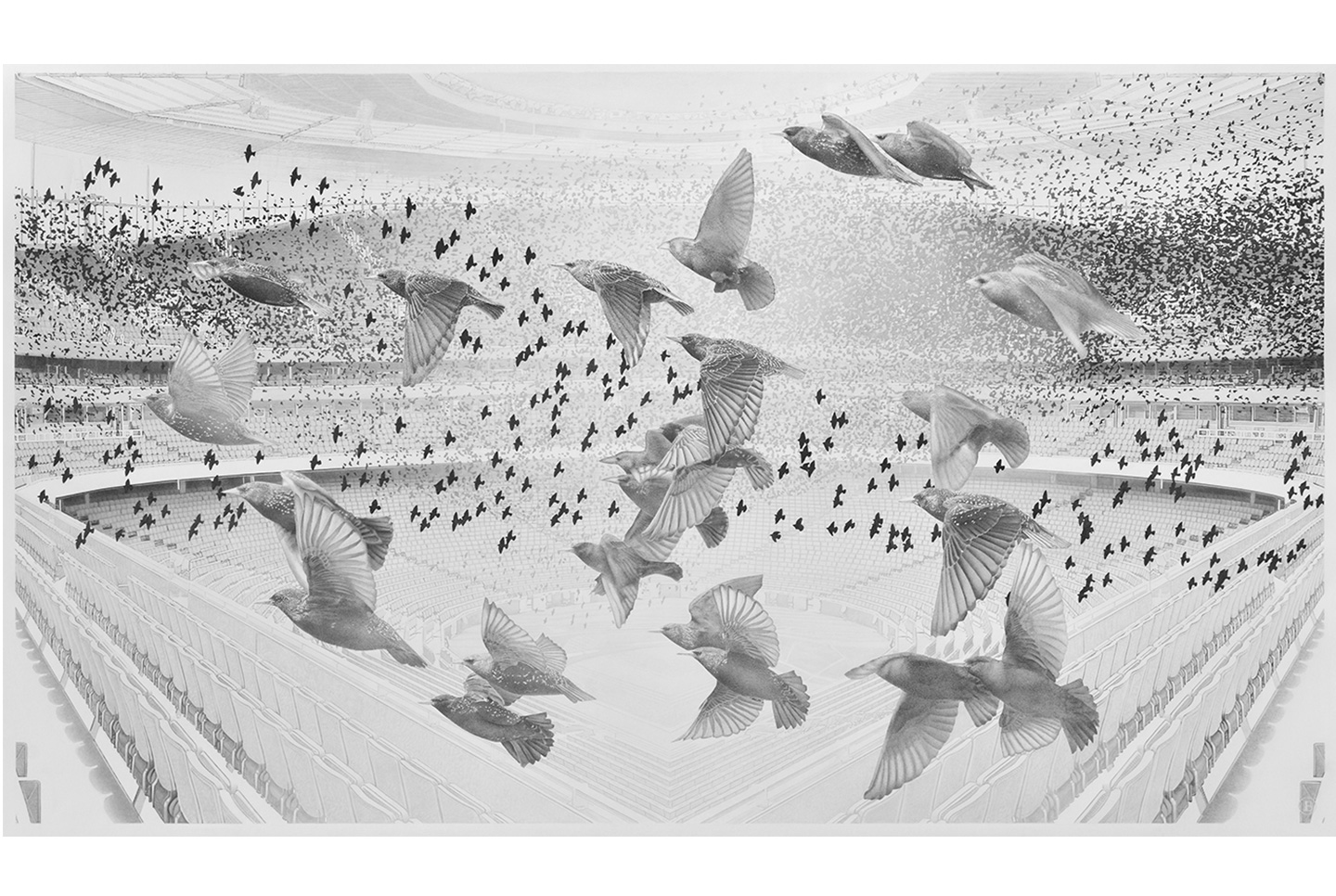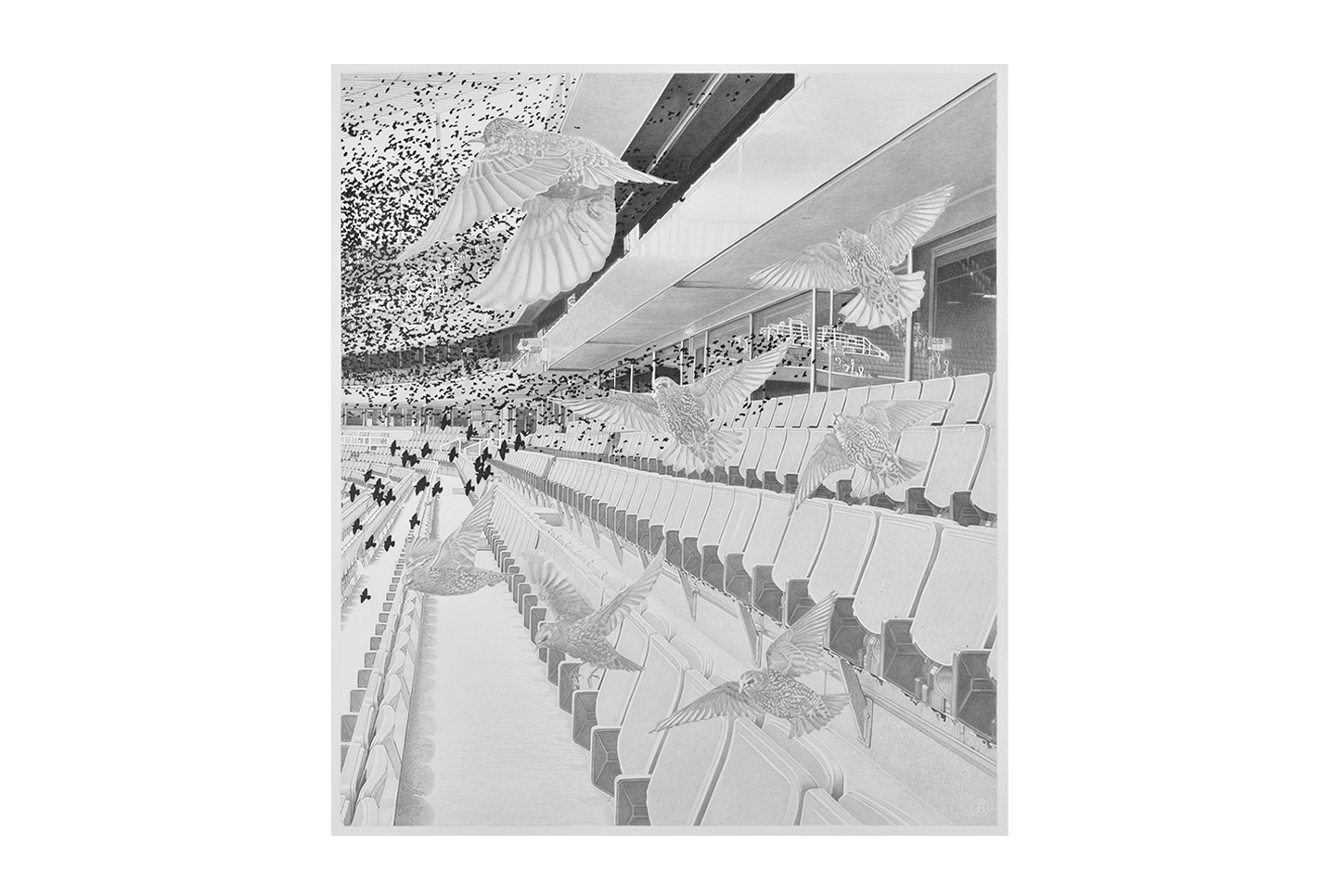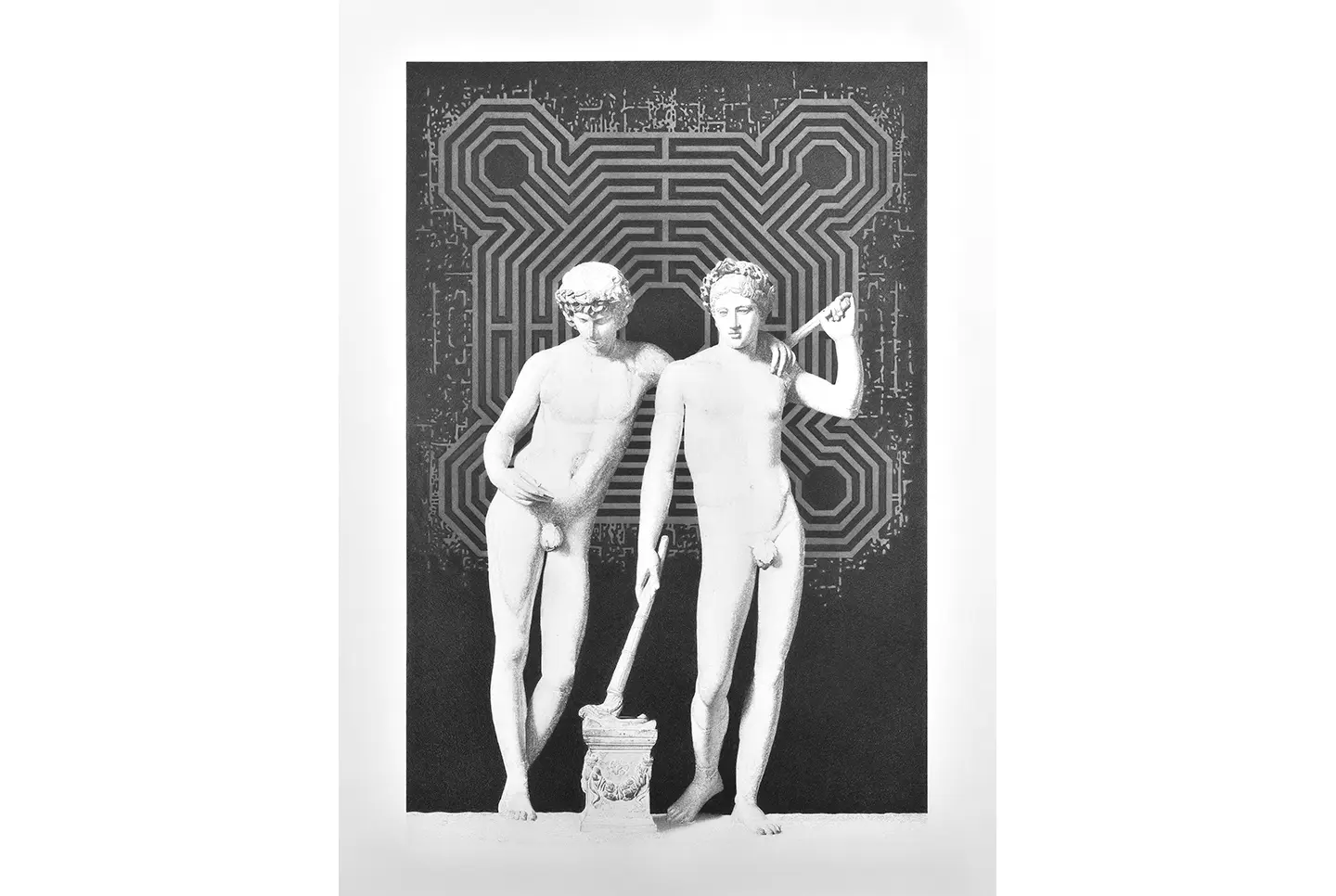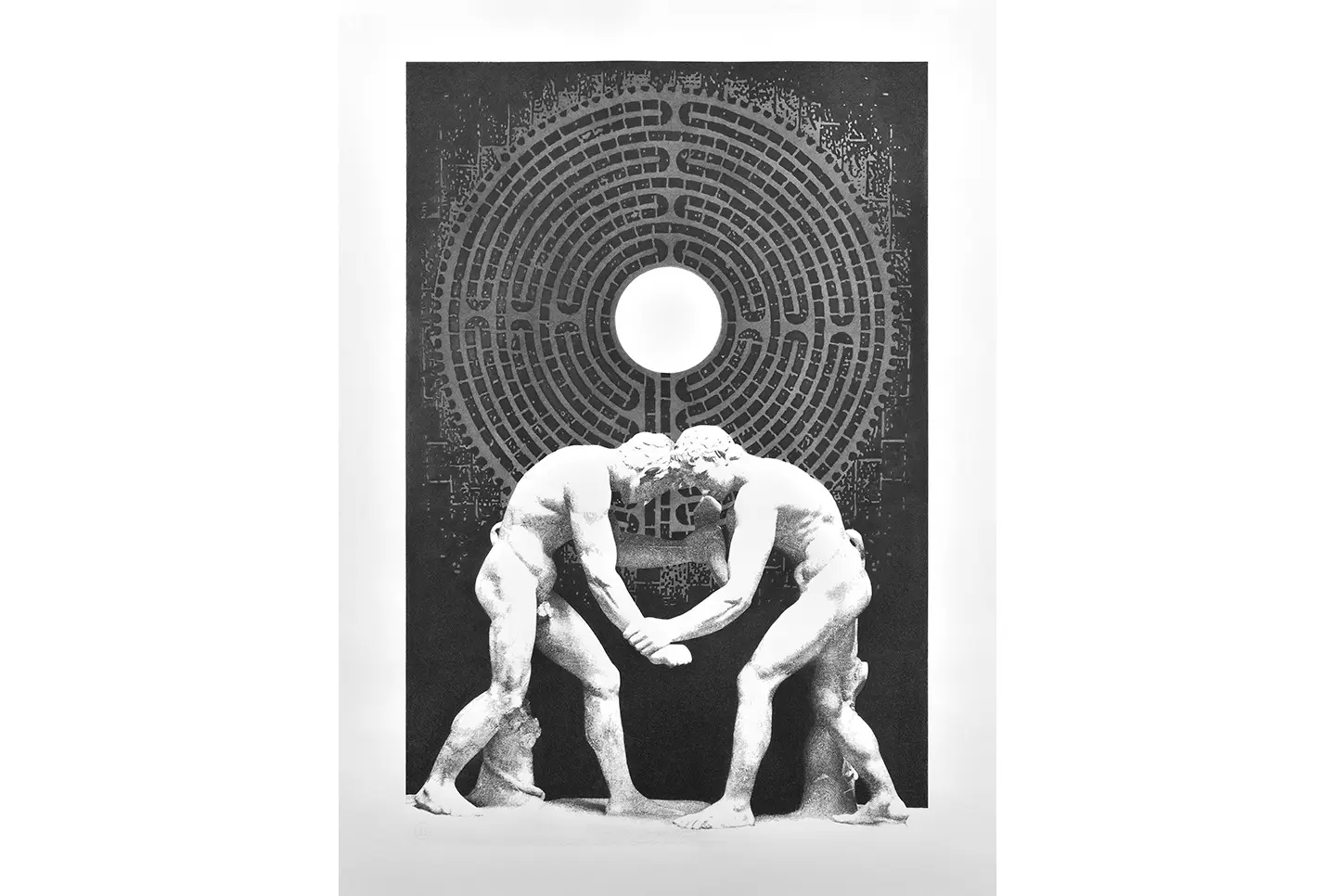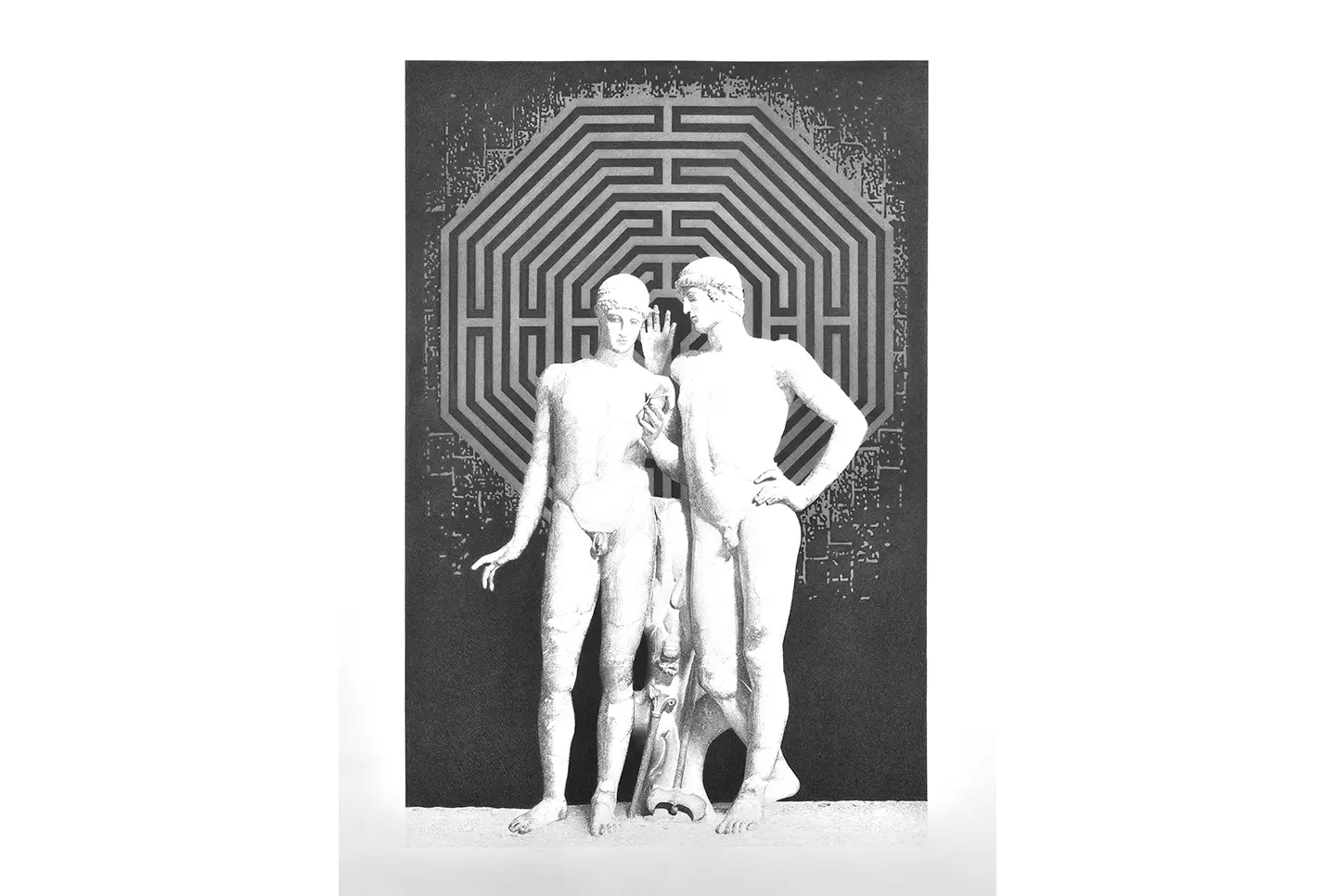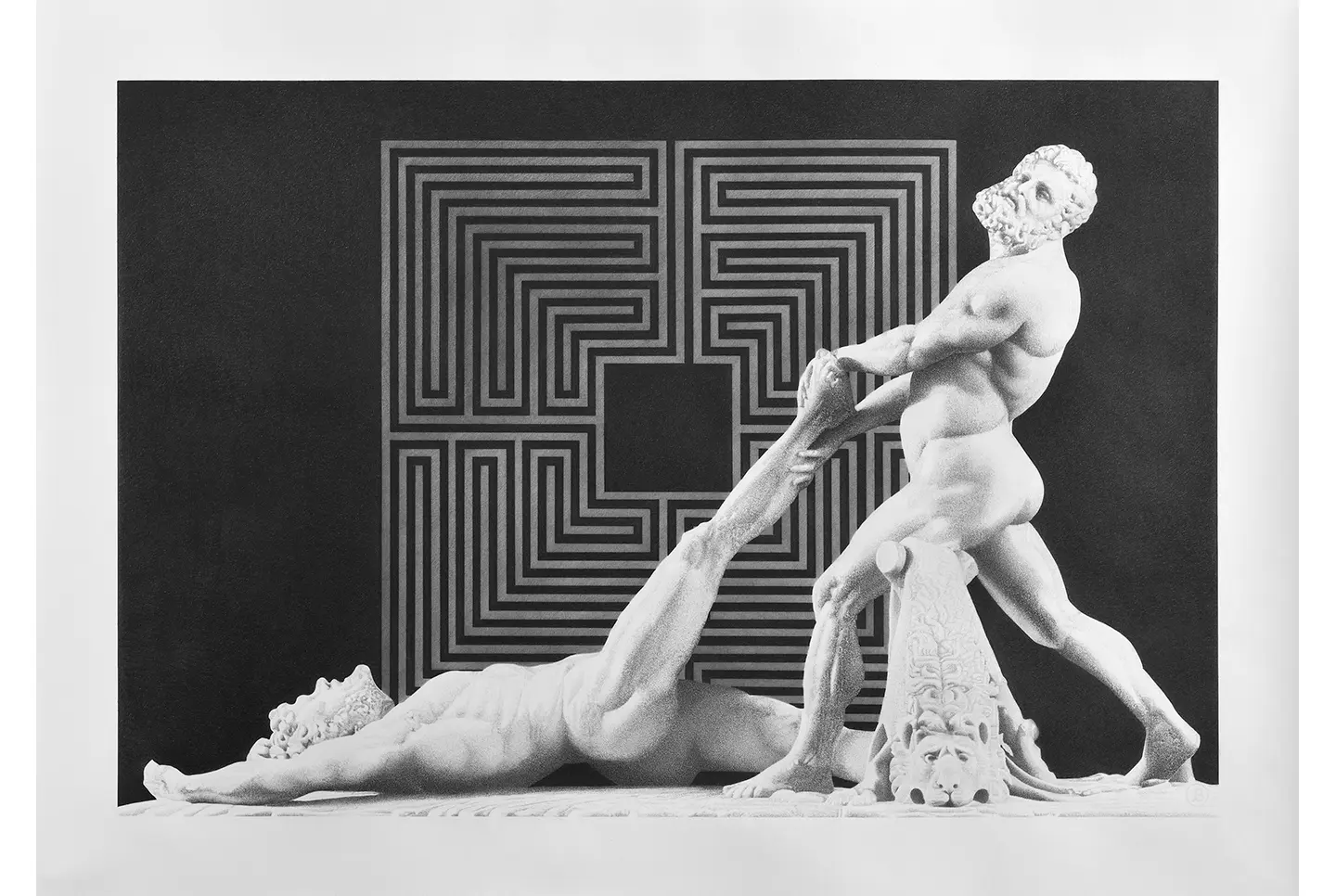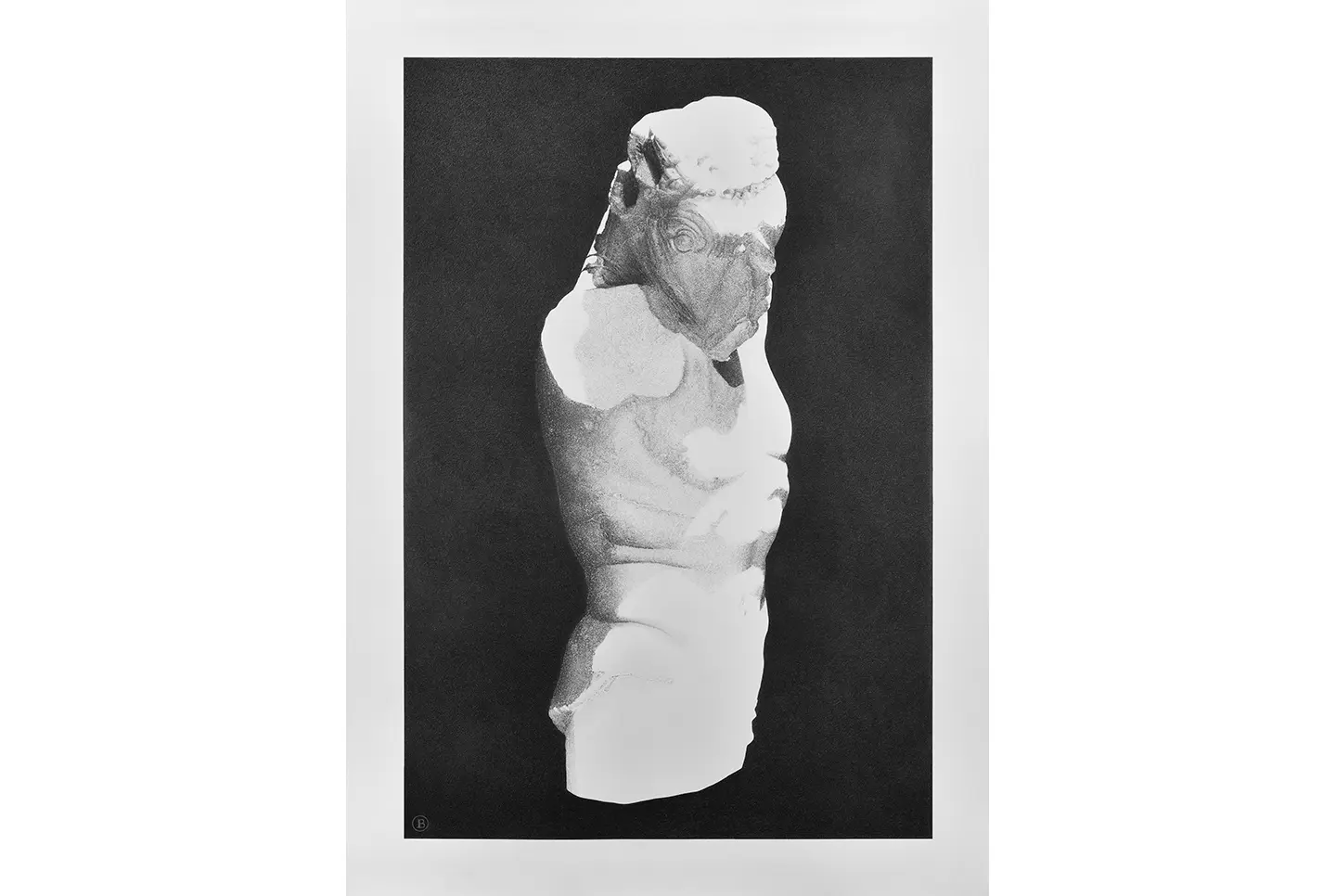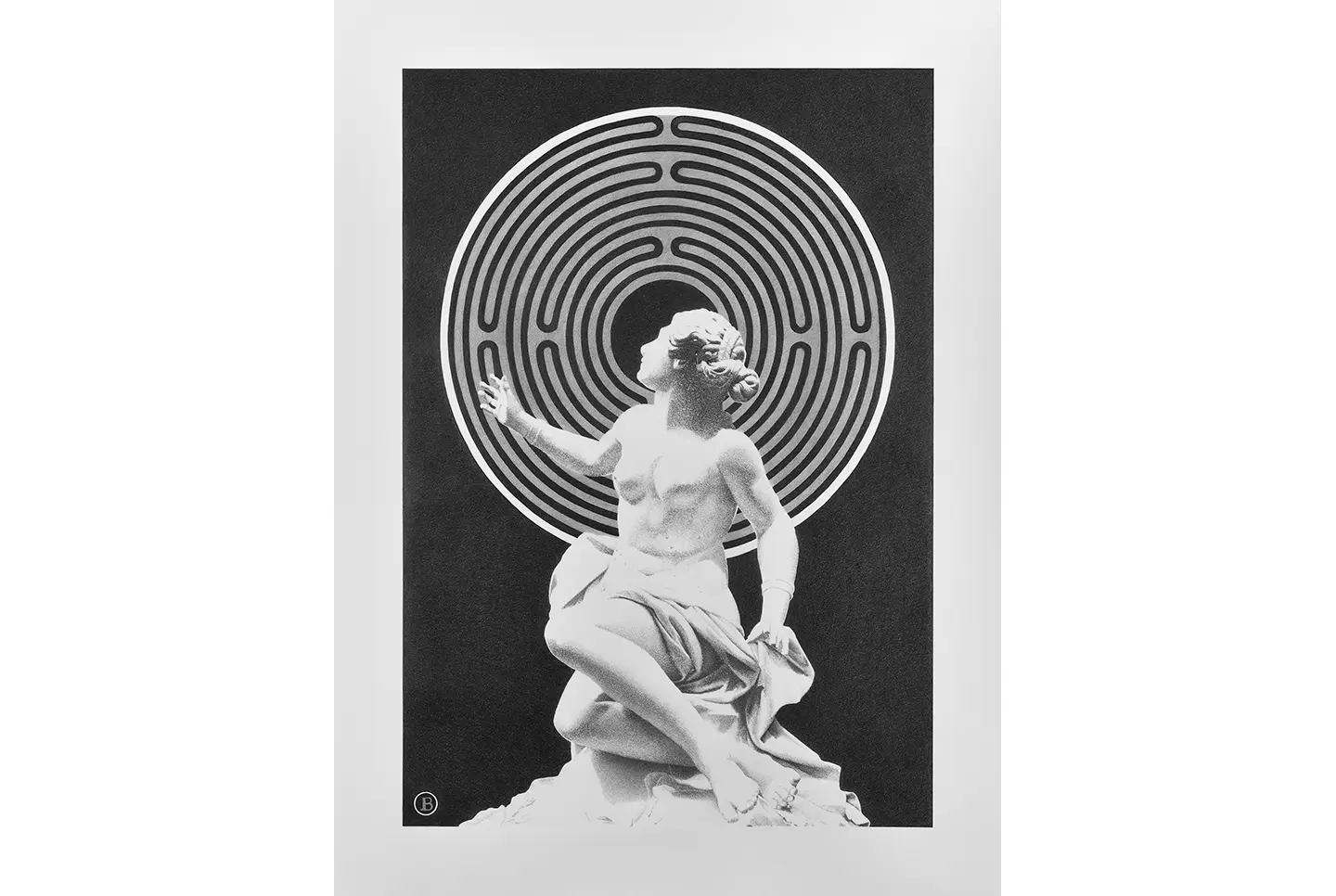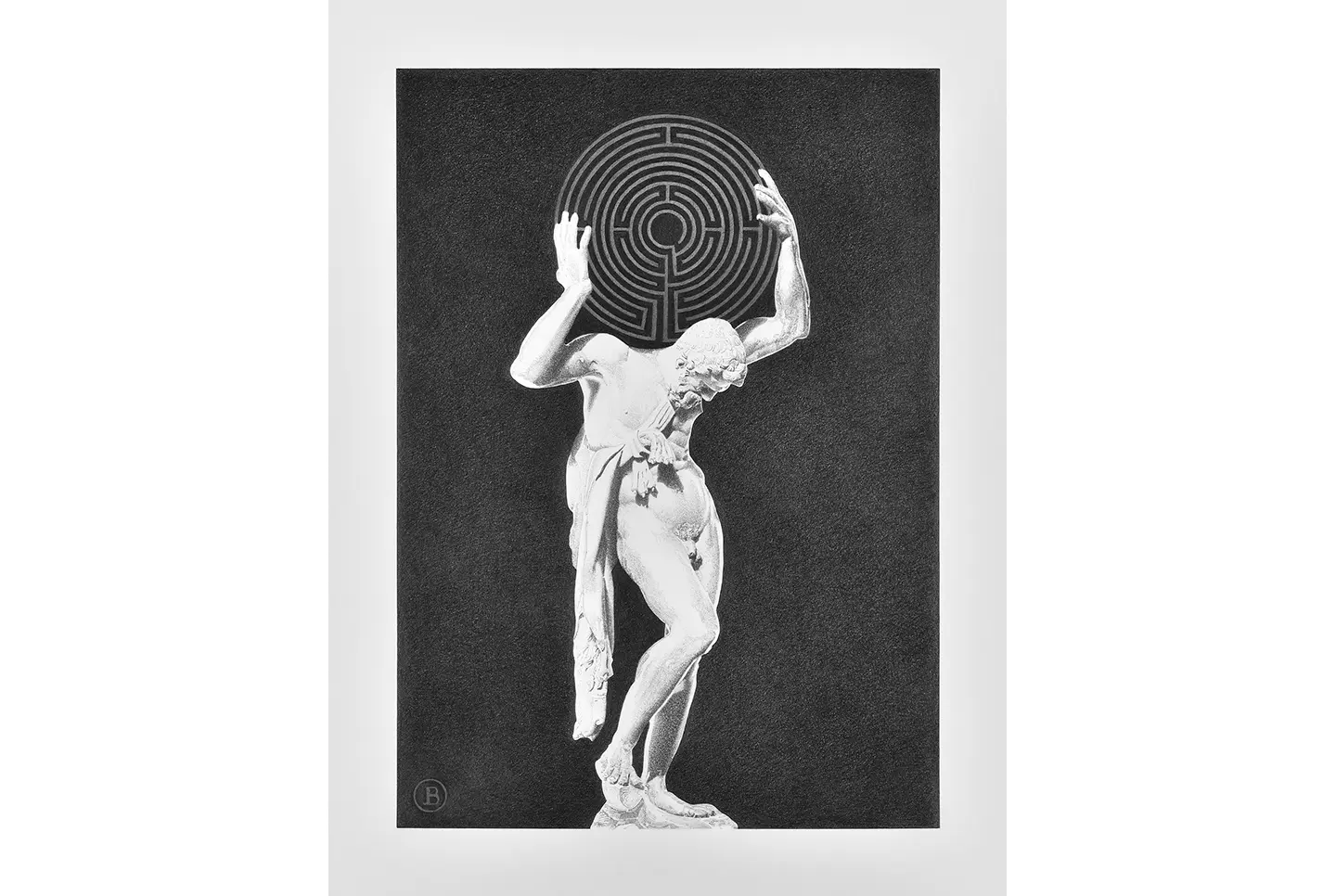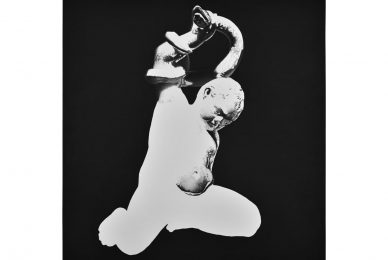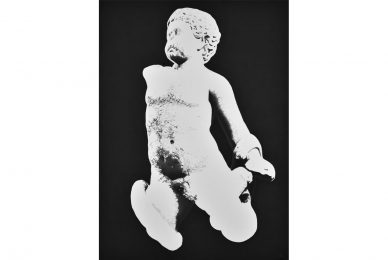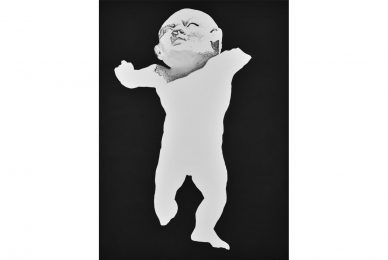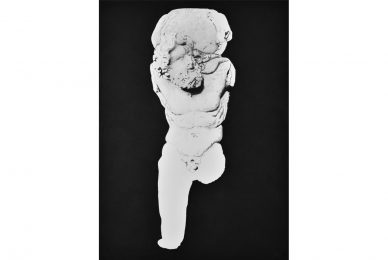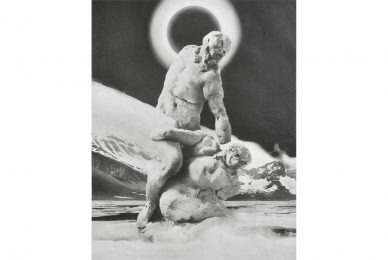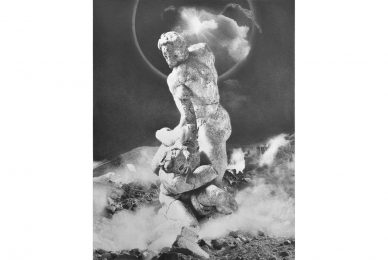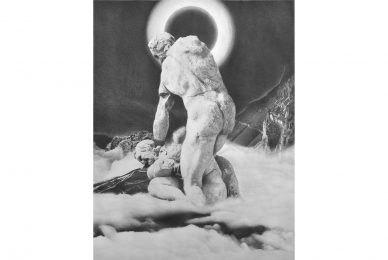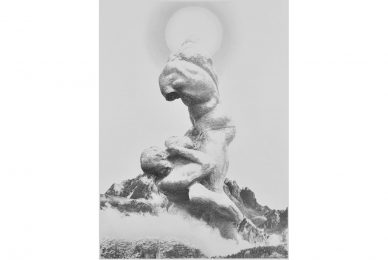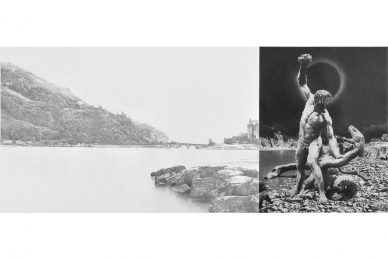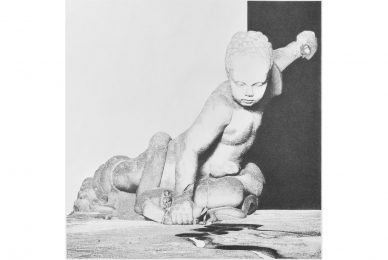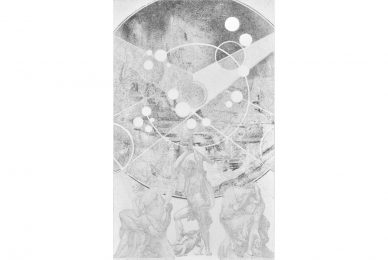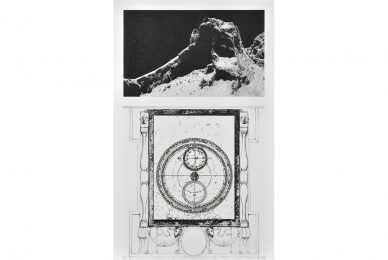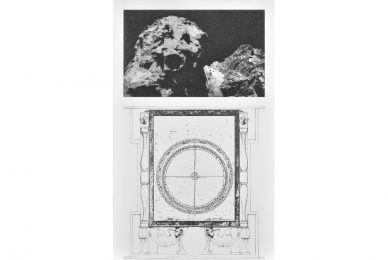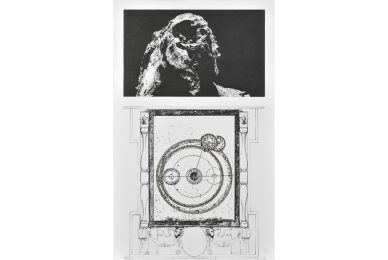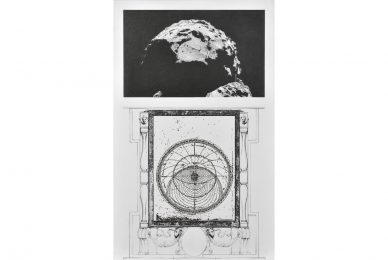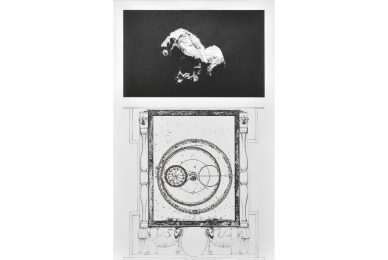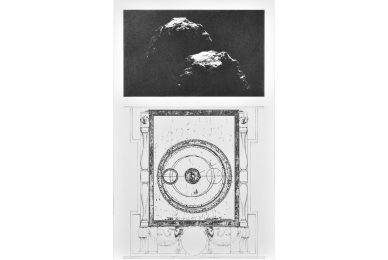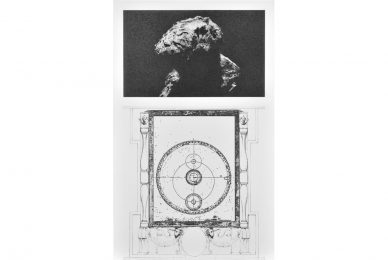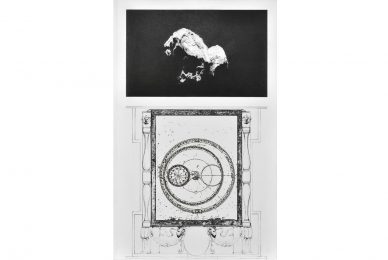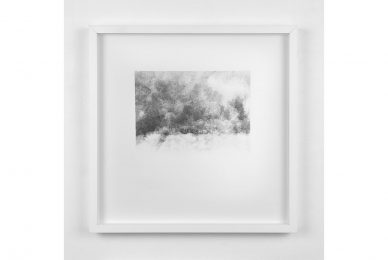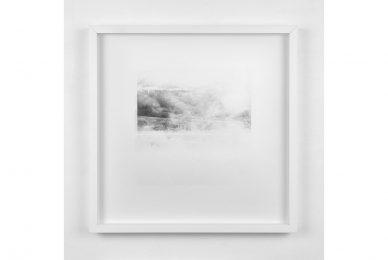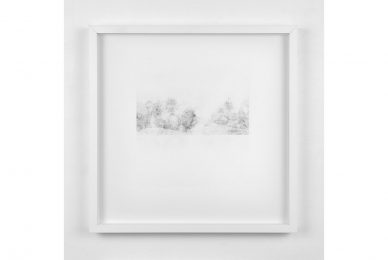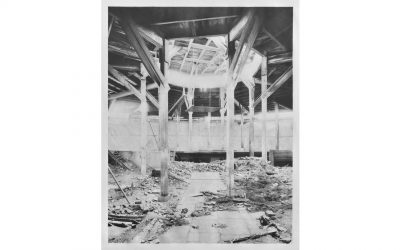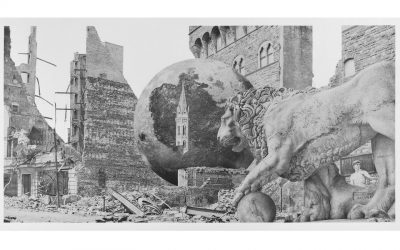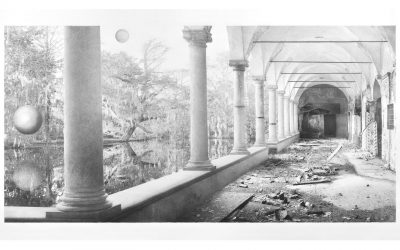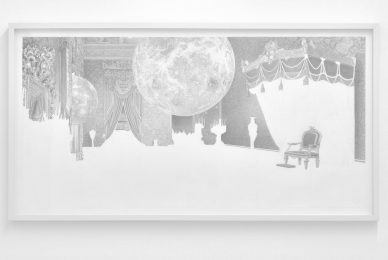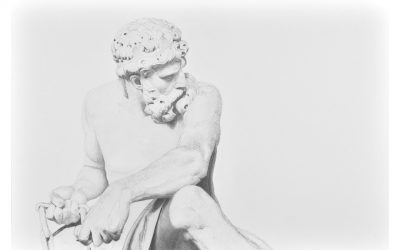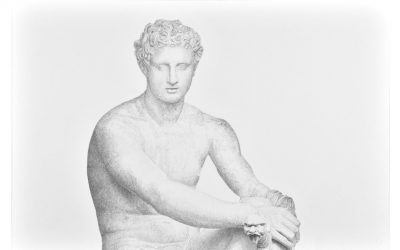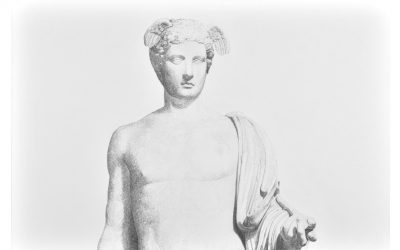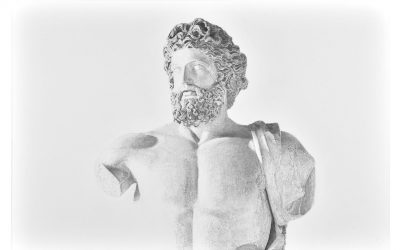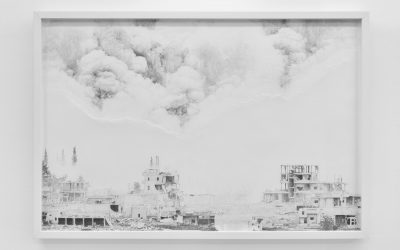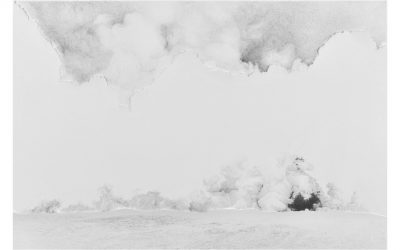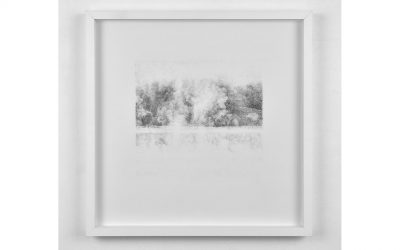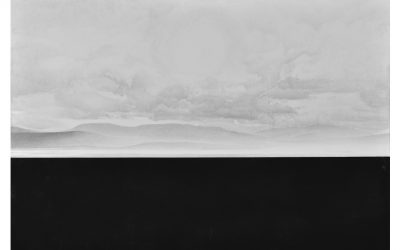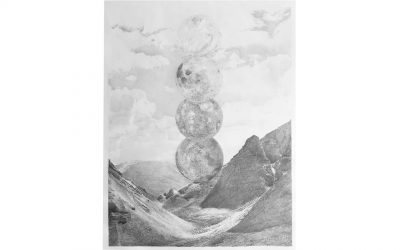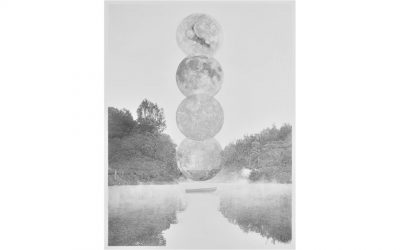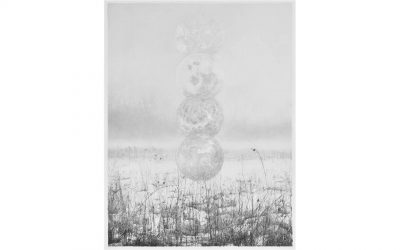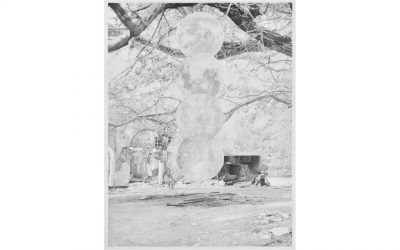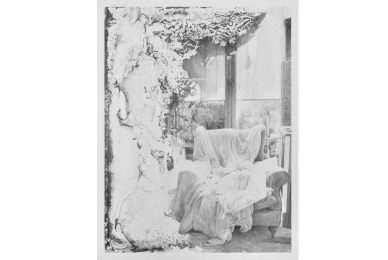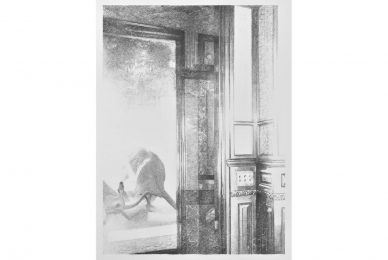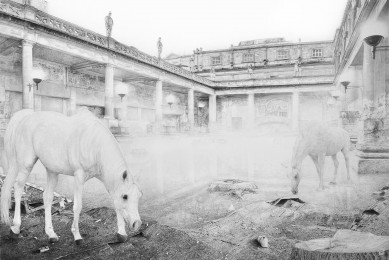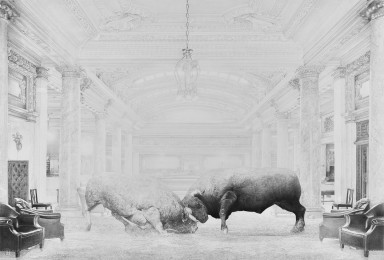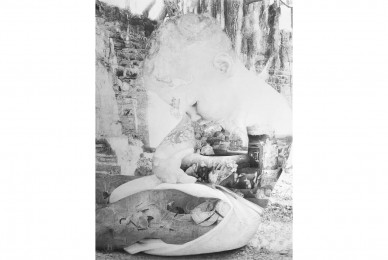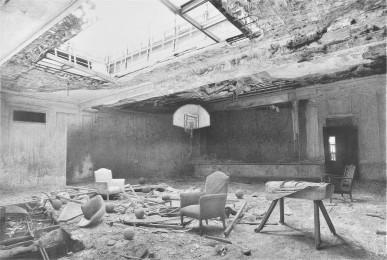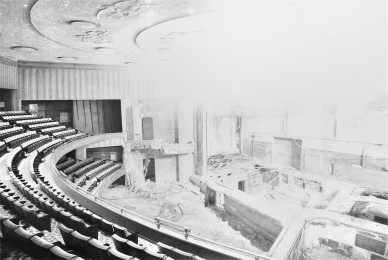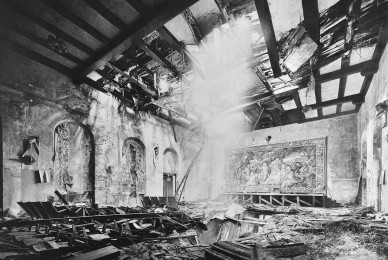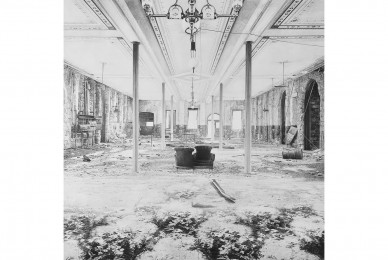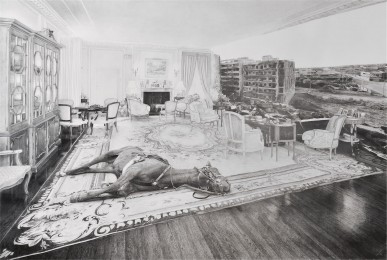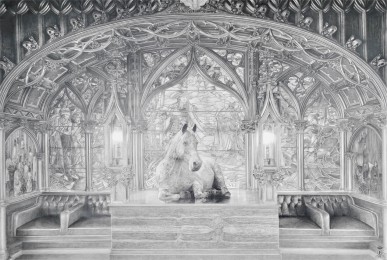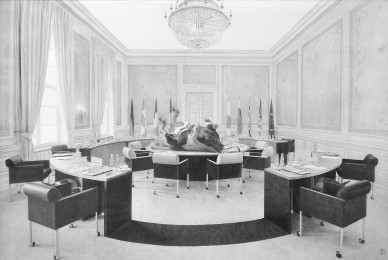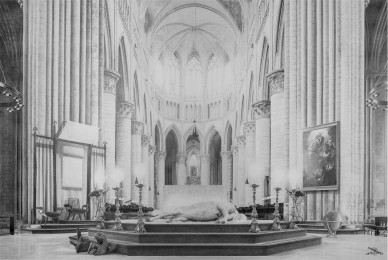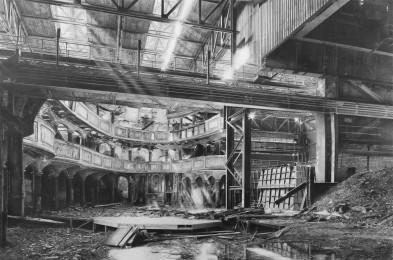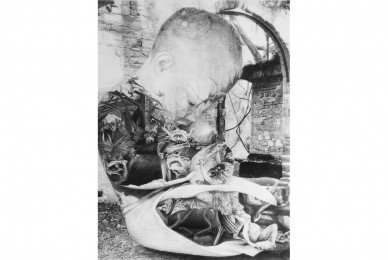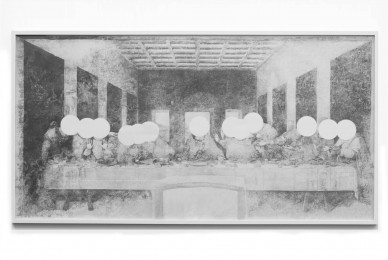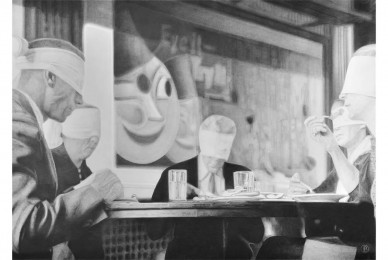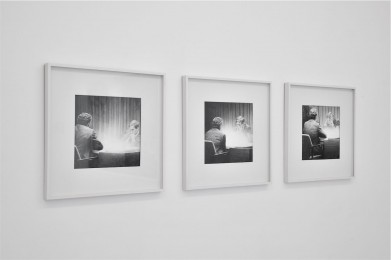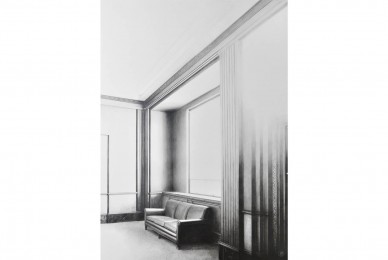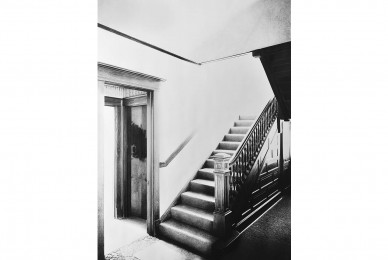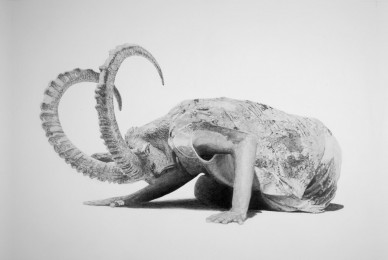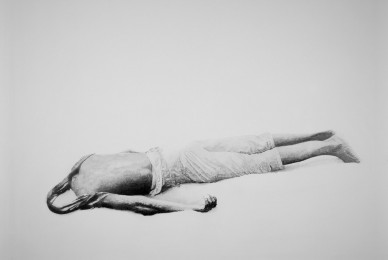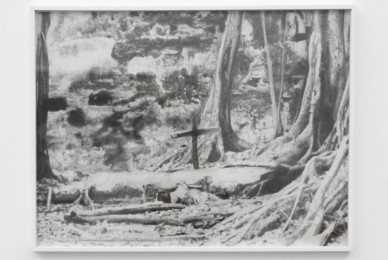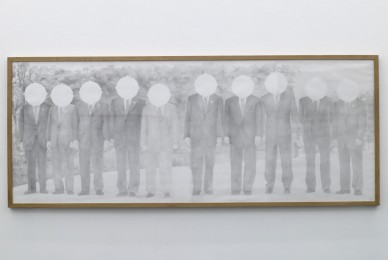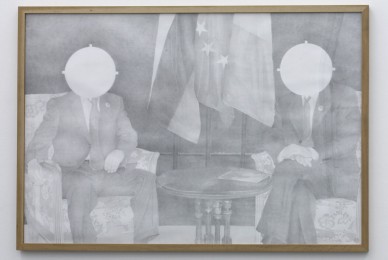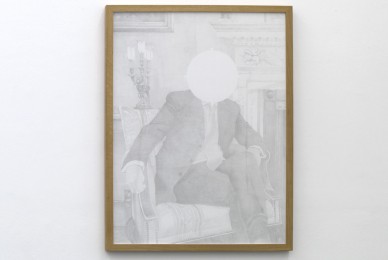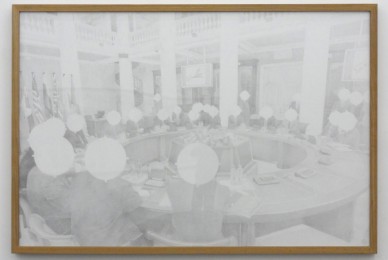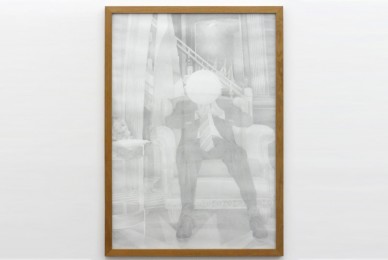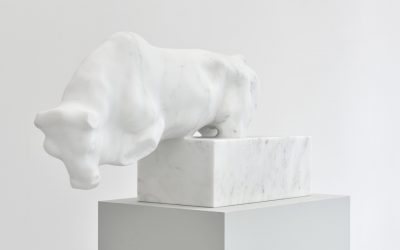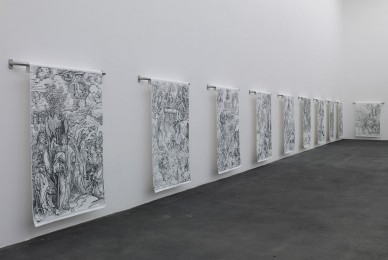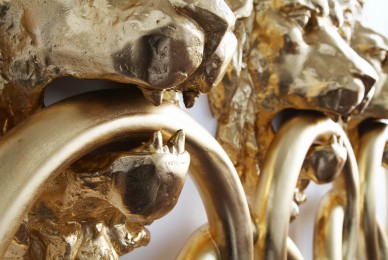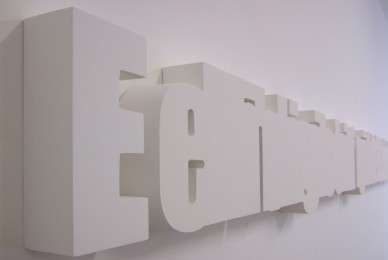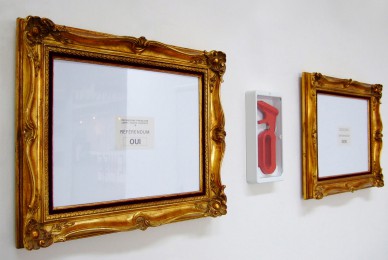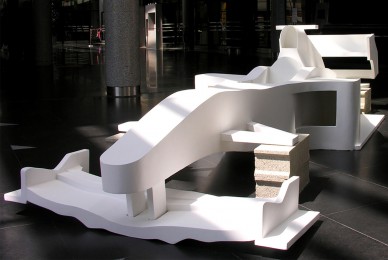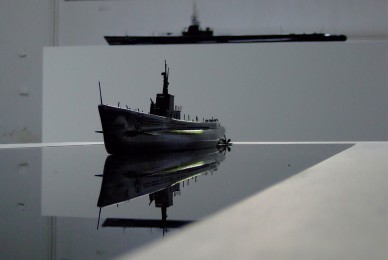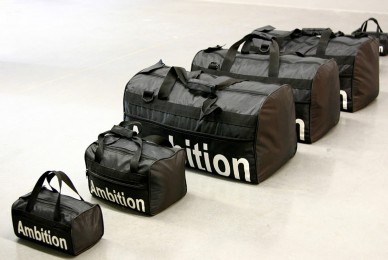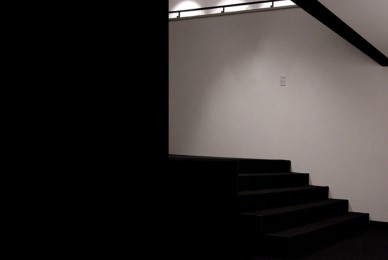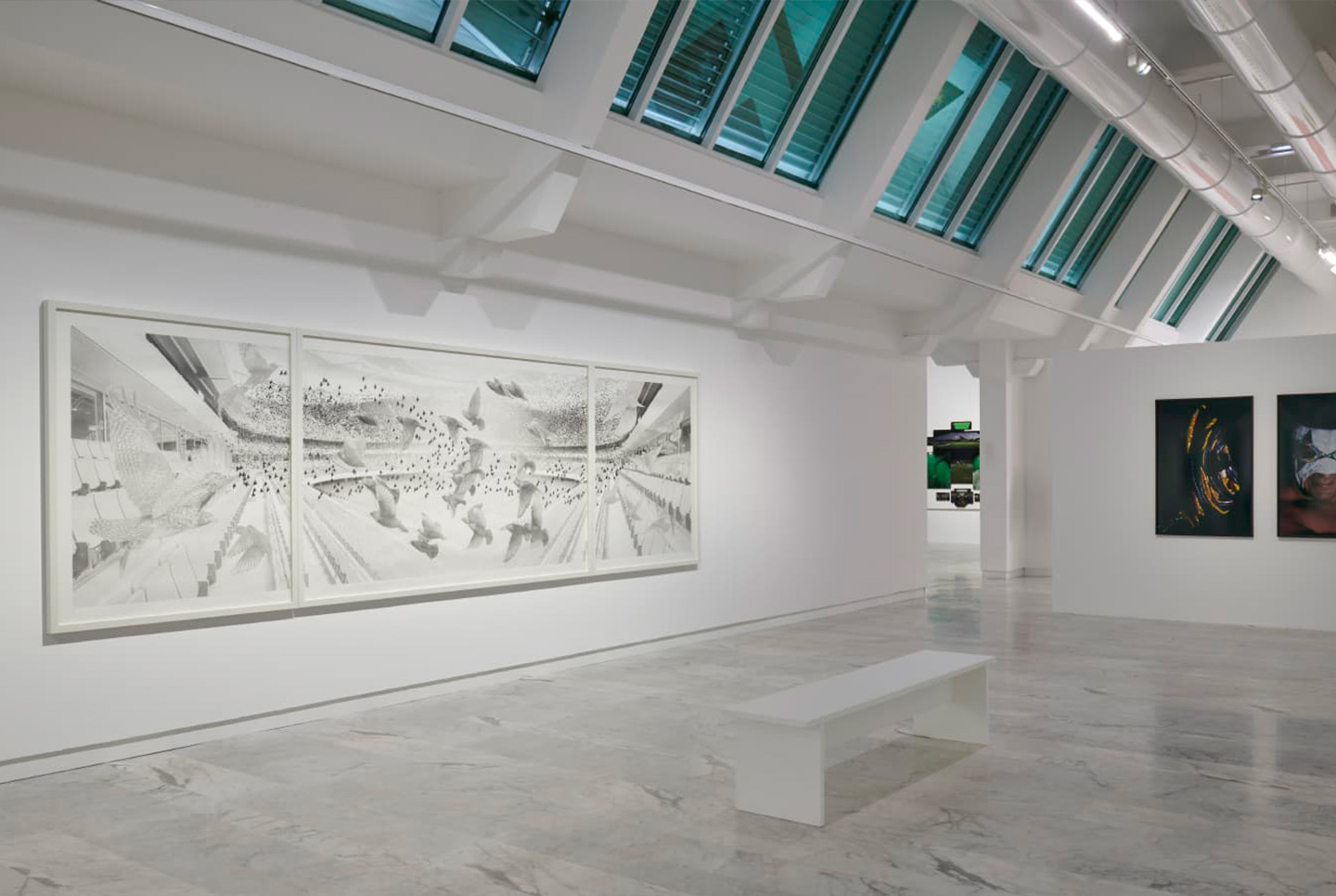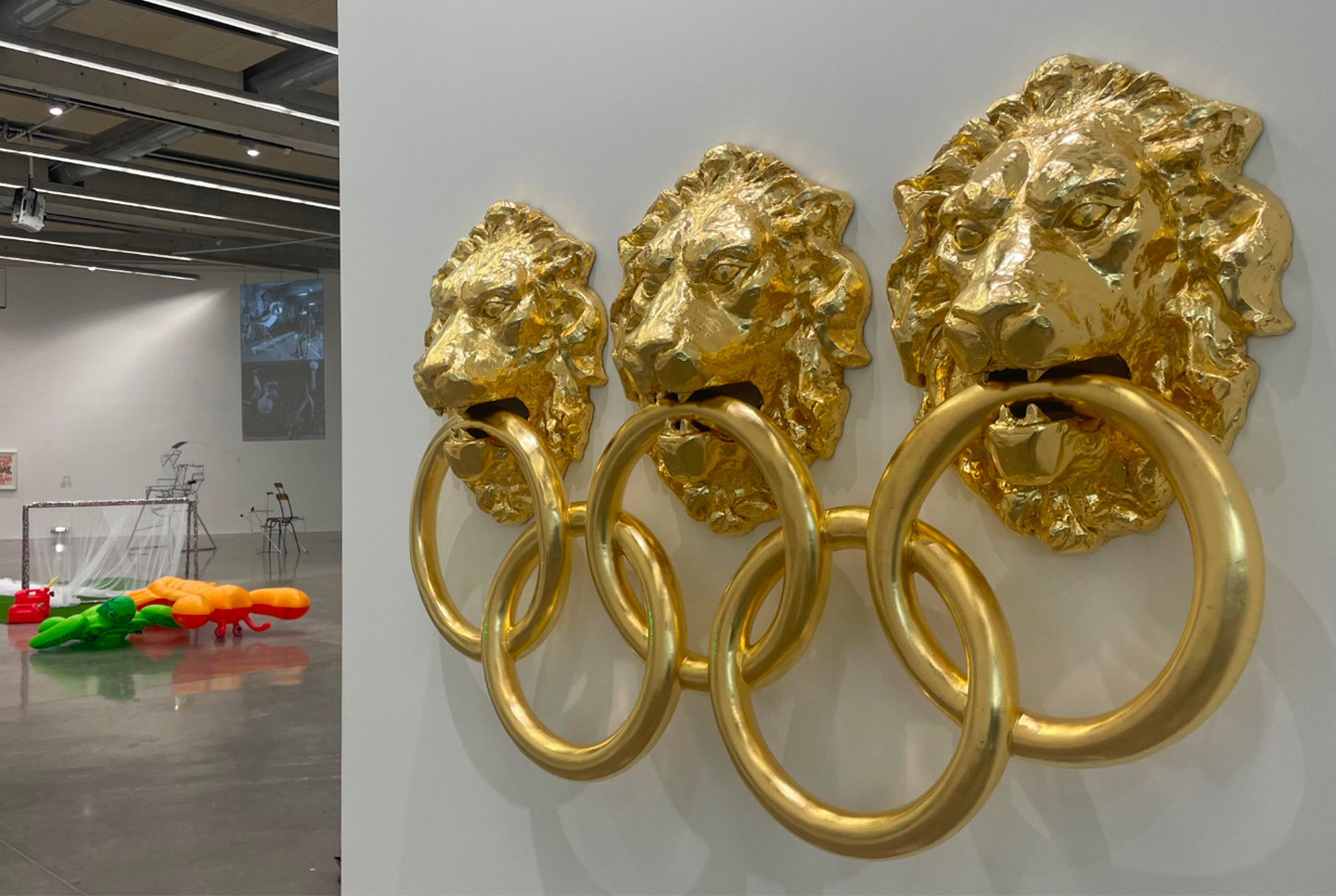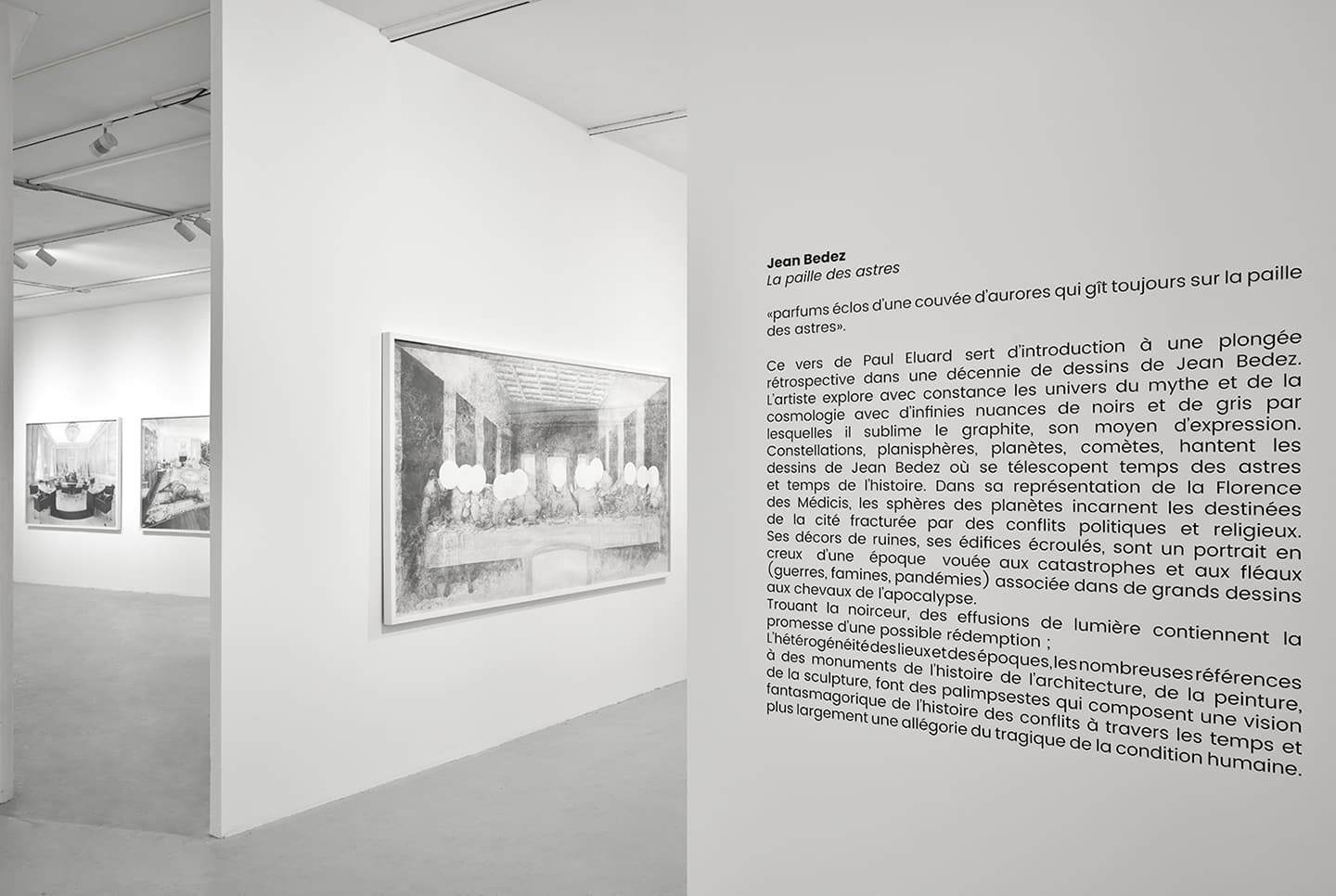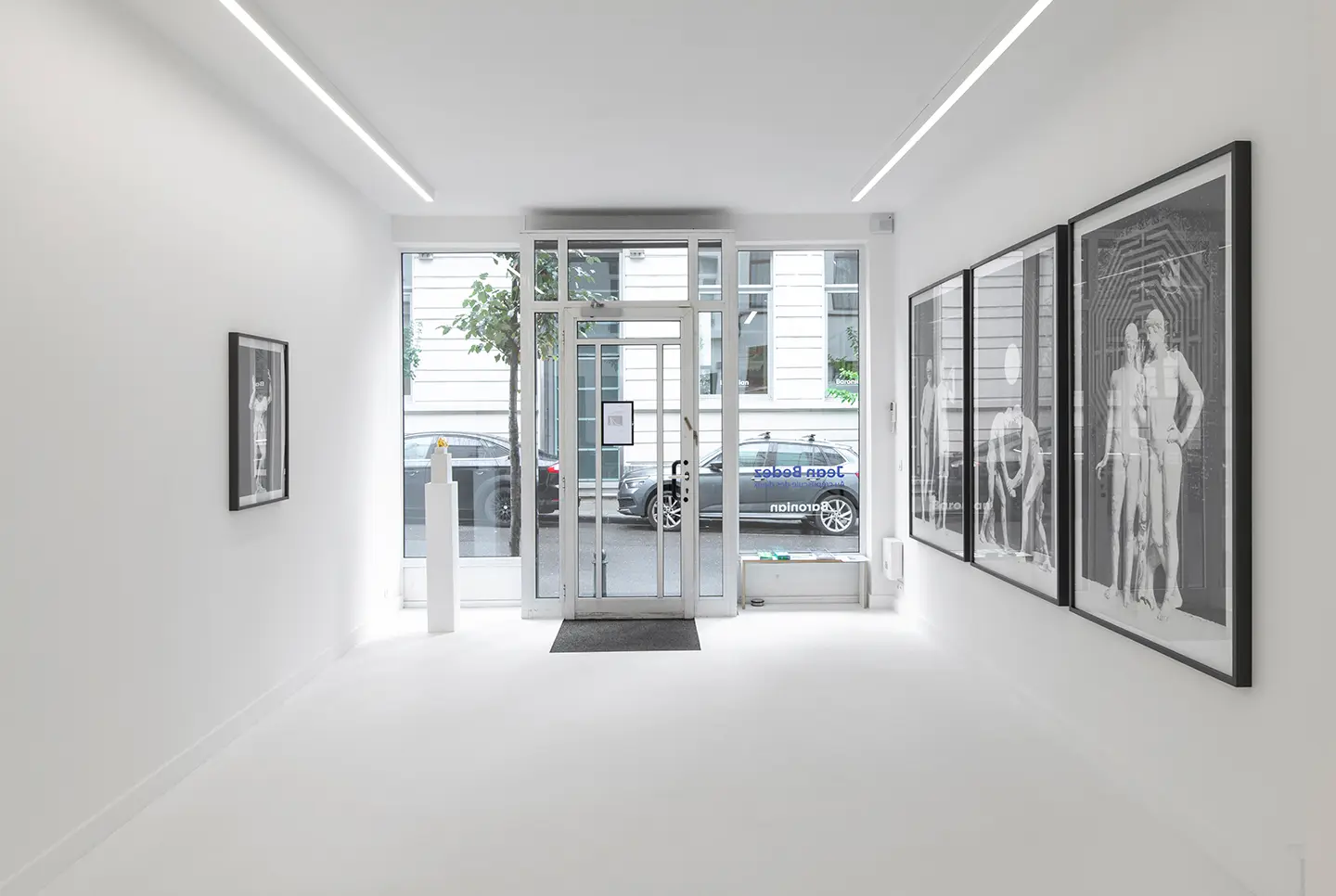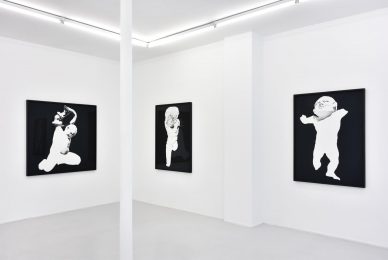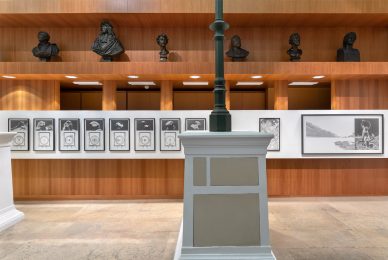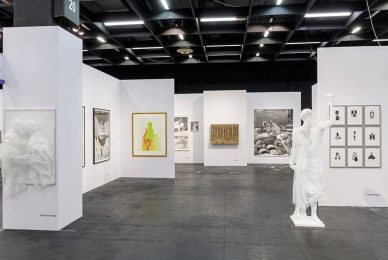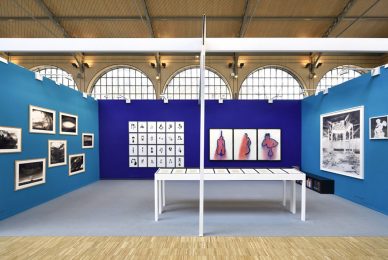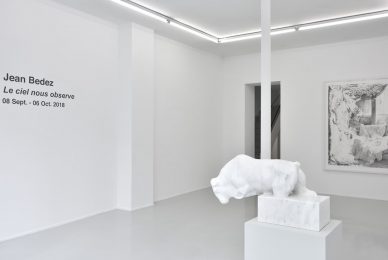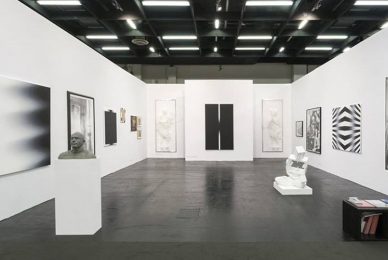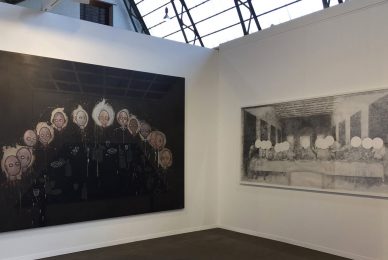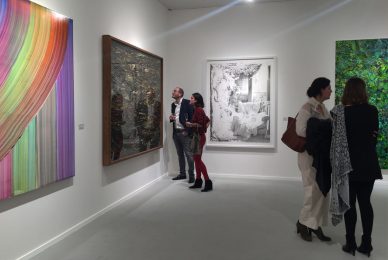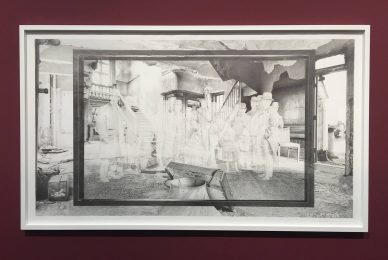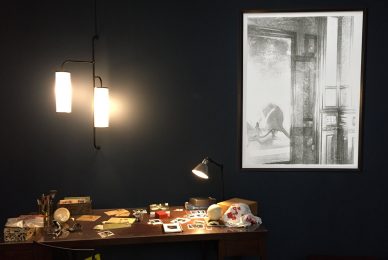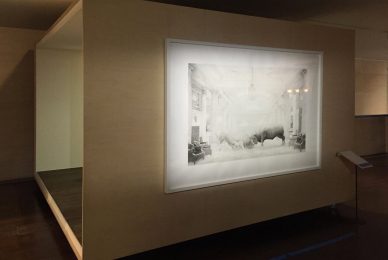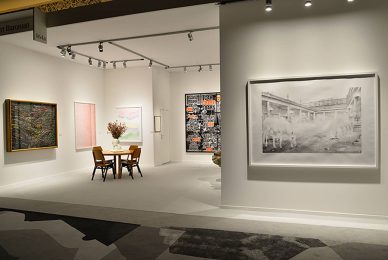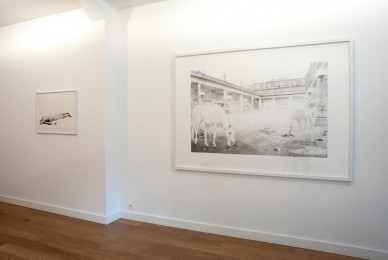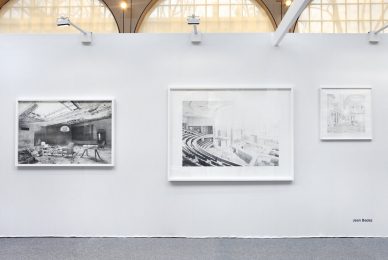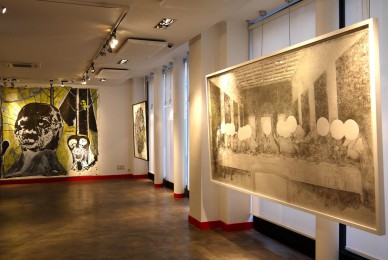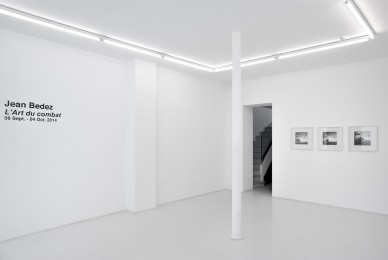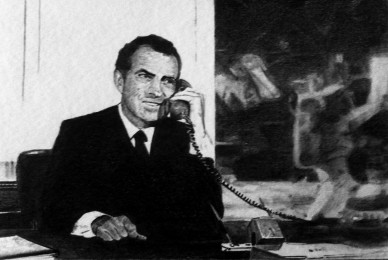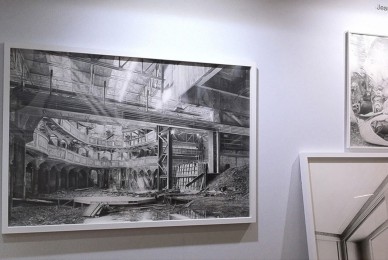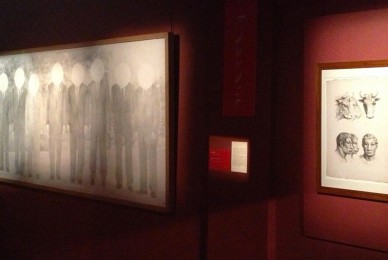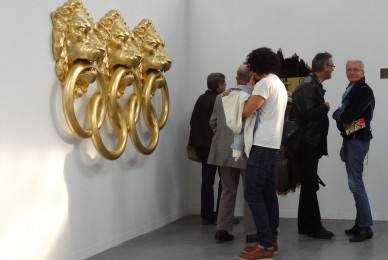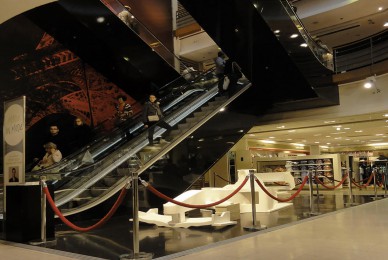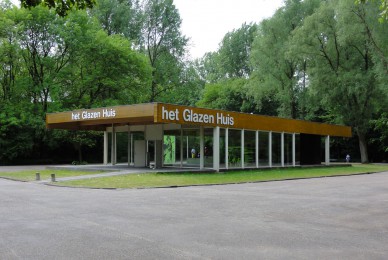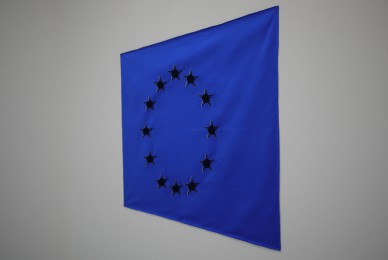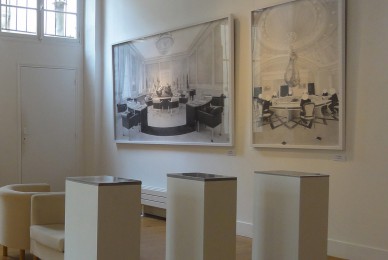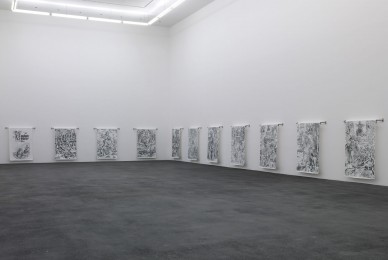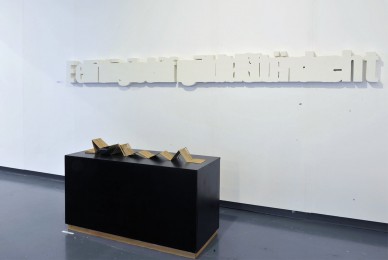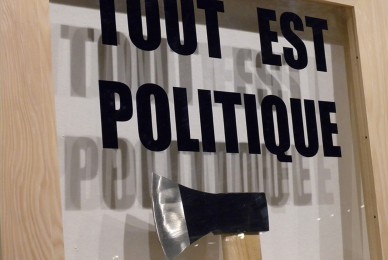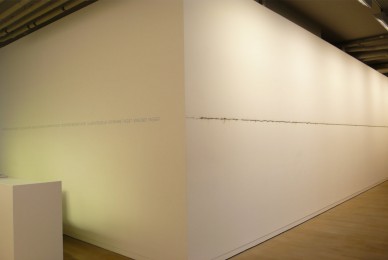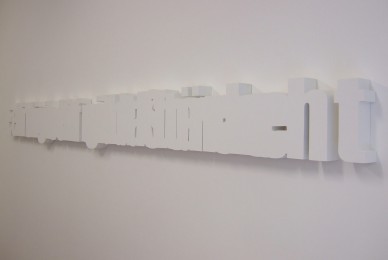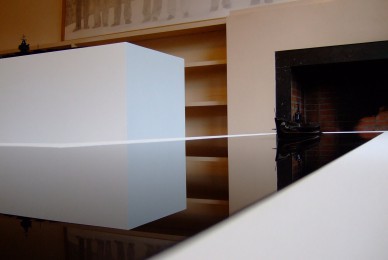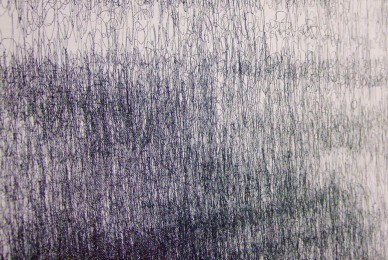2018
Le ciel nous observe / Galerie Tarasieve Paris
Looking up to the works of Jean Bedez invites us to welcome the wilderness of aesthetic oxymora born from an erudite creative act that imposes, in the same breath, an elevated Time of innocence dusted in graphite. Surrounded by the tumult of legendary struggles running across unformulated collective thoughts, the monumental violence of a Florentine Renaissance battles with the presence of images borrowed from popular culture: the luminous Italianness of a symbolic Piazza della Signoria and the blackest of darkness into which wild Savonarola follows his bloodthirsty path; the diachronic nature of time, unattainable as much as unfinished – and the Nouveau roman dating hinted at with a very Nathalie Sarraute imaginary Planetarium; the floating diagonals, the blurred perspectives or the flawed ridgelines falling prey of a sfumato; the aerial lightness arising from the creative genius of the alchemist and the crust of the earth battered under the hoofs of a bull whose massive presence – sculpted into the flesh of the marble – commands a silent fight; the setting of a décor with theatrical ornaments and the thunder caused, not only by the collapse creating disorder within the frame, but also by the chaos of industrial no manʼs lands that force open the draperies of an abandoned palace just like the one in Marienbad; the kinetic movement of a duel directed by Scorsese and the stillness of sacrosanct objects preserved under invisible glass covers. Lubitsch is a liar: “Heaven can wait”, but it is watching us.
*
The object of Jean Bedezʼs drawings is haunted by the representation of the “deep forces” of the tensions pervading public power. Equally, the artist, turned culturalist historian, is called to the Florentine Renaissance wars when, through the sharp plurality of his stroke, he renders, under the unexpected guise of fresco painting style fragments, the archetypes of a warlike violence with exploratory paroxysms. The apostolic preachings of totem figures that populate the chronicles elicit his talent, newly cartographic a times and imaginatively cosmogonic at others. Like a deflected camera lucida, Jean Bedezʼs drawings elude scale, shifting the sumptuous “macro” to slit the detailed “micro”; they expose the torments of the already baroque luxury of a Lorenzo deʼ Medici torn between his art and his faith.
Once again, a relentless Jean Bedez broaches the question of the ruling of time. This Tempus, both mathematically and historically inscribed in the Merleau-Ponty like skin of the paper, like the newly dated landmarks of a “world history” mapped elsewhere, questions the issues of present time that replicate, in the contemporary space, the lavish and decadent past splendour of a fantasised Italy, rustling with gold as much as with “Blood Dark”. Outside of self-practices (time at work / working time), decipherable under the multiple sets of graphite, Jean Bedezʼs drawings interrogate, from a wide angle, the time of the artwork, both object and subject, as it refracts the Event confronted with what actually is. Thus Jean Bedez puts forward an Augustinian contemporaneity stemmed from the present, “memory of things past and expectation of things to come”. He scrutinises the flashing moment which, postponing the ephemeral, roots itself into a historical depth which has still remained poetical as the pencil marks enable mysterious reveries. Jean Bedez seizes space: he builds, and immediately unbuilds the patrimonial ruins strangely associated with factory cymas awaiting both rehabilitation and redemption, themselves born of the effects of time or “catastrophe”. And suddenly, manufacturing slags of erasure, Bedez, a conscious critic, fractalises a ceiling and shocks into being a chasm, and an abyss, too.
Jean Bedezʼs overarching subject matter is assuredly politics. Beyond chiasmus, his creative work belongs in a cultural history of politics as much as in a political history of culture. At the heart of it is a triad along distinct repertoires: first, power, then, battle, and, lastly, actors (in attendance or not), face to face, back to back, as if in a game of chess, as if organising deployment strategies over visible or invisible territories, defined or limited. Jean Bedez captures the “thought-drawing” of the ornament, and observes, on the pyre of vanity, as the scene is set for the monumentality of a place: hotel hall, great salon, church, throne room or famous place, suddenly taken out of the frame, as if displaced by the muffling of a dizzying fall unfolding the ghosts of smoked air columns. Henceforth the artist expands the artwork reconfigured by the heaps and aggregations – constrained or not – maimed with scars and fragmentary debris, set, in the manner of unica, in a u-topos only himself knows.
*
Jean Bedezʼs decision work, which has no equivalent, blasts a Starobinskian beauty. Historical and historicised to the extreme by scholarly patches intertwined with Pop corners, his work also convenes immediacy, welcoming historyʼs, but also art historyʼs memories. Adjusting the archeological shards of a dia/anachronic frieze, he elicits the “tales and legends”, scholarly or vernacular, of a transnational tale, undertaken at the turn of Renaissance and lost in the radicalities of the Cold War. Jean Bedez breaks bloc logic as if detaching watermarks, twisting lines and cracking marble. He refuses elementary reductions, chooses to scoff at the national narrative like he scoffs at its language. A cinephile, the creator lays horizon structures and, rightly, the sky bears witness to him.
Agnès CALLU
(PhD/HDR)
Researcher at Institut Acte (Arts, Creations, Theories, Aesthetics)
Université Paris I Panthéon-Sorbonne / CNRS
*
La représentation des « forces profondes » des tensions traversant la puissance publique hante le dessein des dessins de Jean Bedez. Aussi bien, les guerres florentines de la Renaissance appelent lʼartiste, devenu historien culturaliste, lorsque, par la précision de son trait pluriel, il restitue, sous lʼinattendu de segments à lʼallure fresquiste, les archétypes dʼune violence guerrière aux paroxysmes exploratoires. Les prédications apostoliques de figures totémiques peuplant les chroniques instruisent son talent, ici, nouvellement cartographique, là, imaginativement cosmogonique. Telle une « chambre claire » détournée, les dessins de Jean Bedez, déjouant les échelles, décalant le somptuaire du « macro » pour inciser le détail « micro », dénoncent les tourments du luxe déjà baroque dʼun Lorenzo deʼ Medici, partagé entre lʼArt et sa Foi.
Une nouvelle fois, Jean Bedez, inlassable, aborde la question rectrice du temps. Ce Tempus, inscrit matériellement comme historiquement, dans la peau merleau-pontienne du papier comme les jalons nouvellement datés dʼune « Histoire mondiale » topographiée ailleurs, questionne les enjeux du temps présent qui réplique, au contemporain, la fastueuse et décadente splendeur passée dʼune Italie fantasmée, bruissante dʼor autant que de « Sang noir ». Hors des auto-pratiques (temps au travail/temps du travail), lisibles sous les jeux multiples de la graphite, les dessins de Jean Bedez interrogent, grand angle, le temps de lʼoeuvre, toute ensemble objet et sujet, telle quʼelle réfracte lʼEvénement confronté à lʼActuel. En sorte que Jean Bedez propose une contemporanéité augustinienne issue du Présent, « mémoire des choses passées et attente des choses à venir ». Il scrute lʼéclair de lʼinstant qui, repoussant lʼéphémère, sʼenracine dans une épaisseur historique demeurée toutefois poétique quand les points au crayon autorisent les rêveries mystérieuses. Jean Bedez sʼempare de lʼespace : il construit, pour aussitôt les déconstruire, des ruines patrimoniales curieusement associées à des cimaises dʼusines attendant, combinées, réhabilitations et rédemptions, elles-mêmes nées des effets du temps ou de la « catastrophe ». Et soudain, fabriquant des scories dʼeffacement, Bedez, critique conscient, fractalise un plafond et crée, par le choc, lʼabime, lʼabysse aussi.
La thématique « dôme » de Jean Bedez est assurément la politique. Au-delà du chiasme, son travail créateur participe dʼune histoire culturelle du politique autant que dʼune histoire politique du culturel. Au coeur, sʼavance une triade, sur des répertoires différenciés : dʼabord, le pouvoir ; ensuite, le combat ; enfin, les acteurs (en présence ou non), face à face, en vis-à-vis, dos à dos, à la façon dʼune partie dʼéchecs, tels quʼils organisent des stratégies de déploiement sur des territoires visibles ou invisibles, définis ou illimités. Jean Bedez se saisit de la « pensée-dessin » de lʼornement et observe, sur le bûcher des vanités, la mise en situation de la monumentalité dʼun lieu : hall dʼhôtel, grand salon, église, salle du trône ou place célèbre, soudain décadré, comme déplacé par lʼassourdissement dʼune chute vertigineuse déployant les fantômes de colonnes dʼair fumé. Dès lors, lʼartiste dilate le tableau reconfiguré par les amoncellements et les accumulations – contenus ou non –, scarifiés de cicatrices et débris fragmentaires, posés, à la façon dʼunica, dans un u-topos connu de lui seul.
*
Le travail de décision de Jean Bedez, sans équivalent, clame une beauté starobinskienne. Historique et historicisé à lʼextrême par des « aplats » érudits intriqués à des corners Pop, son oeuvre convoque, au même moment, lʼimmédiateté, accueillant la mémoire de lʼhistoire, mais de lʼhistoire des Arts aussi. Ajustant les tessons archéologiques dʼune frise dia/anachronique, il induit les « contes et légendes », savants ou vernaculaires, dʼun récit transnational, entamé au coude de la Renaissance pour se perdre dans les radicalités de la Guerre froide. Jean Bedez casse la logique des Blocs comme il dégrafe les filigranes, assure la torsion des lignes, fissure le marbre. Refusant les réductions élémentaires, il choisit de se moquer du roman national comme de ses vocabulaires. Cinéphile, le créateur pose des structures dʼhorizon et, en justesse, prend le Ciel à témoin.
Agnès CALLU
(PhD/HDR)
Chercheur à lʼInstitut Acte (Arts, Créations, Théories, Esthétiques)
Université Paris I Panthéon-Sorbonne / CNRS
